Summaries, Analysis & Lists

Time Travel Short Stories: Examples Online
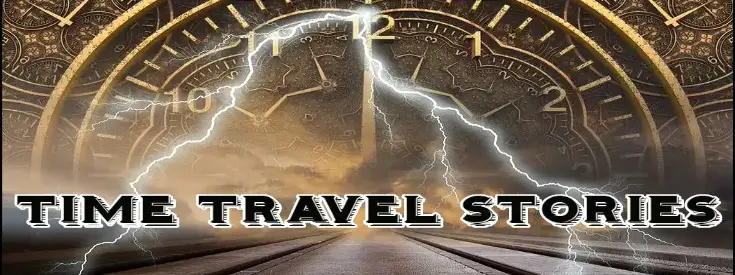
The short stories on this page all contain some form of time travel, including time loops. Some of them contain time machines or other technologies that makes the trip possible; in other stories the jump in time doesn’t have an obvious explanation. They don’t all involve obvious trips to the past or future. Sometimes, the story simply contains an element that is out of place in time. See also:
Short Stories About Time Travel
“caveat time traveler” by gregory benford.
The narrator spots the man from the past immediately. The visitor identifies himself. He’s surprised to find he’s not the first visitor from the past. He wants to take something back to prove he made it.
“Caveat Time Travel” can be read in the preview of The Mammoth Book of Time Travel SF.
“Absolutely Inflexible” by Robert Silverberg
A time traveler in a spacesuit sits in Mahler’s office. He’s informed that he’ll be sent to the Moon, where all visitors from the past have to go. The man tries to get out of it, but Mahler explains why no exceptions are possible.
“Absolutely Inflexible” can be read in the preview of Time and Time Again : Sixteen Trips in Time.
“Yesterday Was Monday” by Theodore Sturgeon
When Harry Wright wakes up on Wednesday morning he realizes that yesterday was Monday. Somehow there is a gap. He notices that his environment doesn’t quite seem complete.
“Yesterday Was Monday” can be read in the preview of The Best Time Travel Stories of the 20th Century.
“Death Ship” by Richard Matheson
The crew of a spaceship is collecting samples from various planets to determine their suitability for human habitation. While nearing a new planet, Mason spots a metallic flash. The crew speculates that it might be a ship. Captain Ross orders a landing to check it out.
“Death Ship” can be read in the preview of The Time Traveler’s Almanac.
“The Third Level” by Jack Finney
The narrator has been to the third level of Grand Central Station, even though everyone else believes there are only two. He’s just an ordinary guy and doesn’t know why he discovered this unknown level. He relates how it happened.
“The Third Level” can be read in the preview of About Time: 12 Short Stories.
“A Touch of Petulance” by Ray Bradbury
Jonathan Hughes met his fate in the form of an old man while he rode the train home from work. He noticed the old man’s newspaper looked more modern than his own. There was a story on the front page about a murdered woman—his wife. His mind raced.
This story can be read in the preview of Killer, Come Back To Me: The Crime Stories of Ray Bradbury.
“Rip Van Winkle” by Washington Irving
Rip Van Winkle is lazy at home but helpful to, and well-liked by, his neighbors. He’s out in the mountains one day to get away from things. With night approaching, he starts for home but meets up with a group of men. He has something to drink and goes to sleep, which changes everything.
This story can be read in the preview of The Big Book of Classic Fantasy .
“Twilight” by John W. Campbell
Jim picks up a hitch-hiker, Ares, who says he’s a scientist from the year 3059. He says he traveled millions of years into the future, but came back to the wrong year. Life in 3059 is trouble free, with machines taking care of everything. Future Earth is in trouble, with all life extinct, except for humans and plants.
This is the second story in the preview of The Science Fiction Hall of Fame: Vol 1 . (49% into preview)
“The Man Who Walked Home” by James Tiptree, Jr.
An accident at the Bonneville Particle Acceleration Facility decimated the Earth’s population and severely damaged the biosphere and surface. Decades later, a huge flat creature emerges from the crater at the explosion site and promptly disappeared. There are other sightings in the years that follow.
This story can be read in the preview of the anthology Timegates . (18% into preview)
“An Assassin in Time” by S. A. Asthana
Navy Seal Jessica Kravitz recovers from the effects of the time jump. She’s done it before, but there are always side-effects. She’s on a highly classified, very important, and expensive mission. Previous jumps have familiarized her with the grounds. This time, she should be able to reach her target.
This story can be read in the preview of AT THE EDGES: Short Science Fiction, Thriller and Horror Stories . (17% in)
“The Merchant and the Alchemist’s Gate” by Ted Chiang
Fuwaad, a fabric merchant, appears before the Caliph to recount a remarkable story. While looking for a gift, he entered a large shop with a new owner. It had a marvelous assortment of offerings, all made by the owner or under his direction. Fuwaad is led into the back where he’s shown a small hoop that manipulates time. He also has a larger gateway that people can walk through. The owner tells Fuwaad the stories of a few who did just that.
This story is on the longer side but doesn’t feel like it. Most of “The Merchant and the Alchemist’s Gate” can be read in the Amazon preview of Exhalation: Stories .
“Time Locker” by Harry Kuttner
Gallegher is a scientist—drunken, erratic and brilliant. He invents things but pays them little attention after. His acquaintance Vanning, an unscrupulous lawyer, has made use of some of these inventions, including a neuro-gun that he rents out. During a visit he sees a locker that is bigger inside than out. Fascinated with the item’s possibilities, he offers to purchase it.
Some of “Time Locker” can be read in the preview of The Best Time Travel Stories of the 20th Century.
Time Travel Short Stories, Cont’d
“All You Zombies” by Robert A. Heinlein
A young man explains to a bartender that he was born a girl. He (she) gave birth to a child and there were complications. The doctors noticed he (she) was a hermaphrodite and performed an emergency sex-change operation.
A lot of this story can be read in the preview of “ All You Zombies—”: Five Classic Stories .
“The Hundred-Light-Year Diary” by Greg Egan
The narrator meets his future wife, Alison, for lunch exactly when he knew he would. His diary told him. Everyone alive is allotted a hundred words a day to send back to themselves.
Most of this story can be read in the preview of Axiomatic . (Select Kindle first then Preview, 57% in)
“The Dead Past” by Isaac Asimov
Arnold Potterley, a Professor of Ancient History, wants to use the chronoscope—the ability to view a scene from the past—for his research on Carthage. The government maintains strict control over its use, and his request is denied. Frustrated, Potterley embarks on a plan to get around this restriction, which is professionally risky.
Some of this story can be read in the preview of The Complete Stories, Vol 1 . (6% in)
“Signal Moon” by Kate Quinn
Working with the Royal Naval Service, Lily Baines intercepts radio communications to enemy vessels for decoding. One night, everything changes when she picks up an impossible message—a plea for help from another time.
Preview of “Signal Moon”
“Journey to the Seed” by Alejo Carpentier
An old man wanders around a demolition site, muttering a string of incomprehensible phrases. The roof has been removed and, by evening, most of the house is down. When the site is deserted, the old man waves his walking stick over a pile of discarded tiles. They fly back and cover the floor. The house continues to rebuild. Inside, Don Marcial lies on his deathbed.
“A Sound of Thunder” by Ray Bradbury
In the future, a company offers guided hunting safaris into the past to kill dinosaurs. Extreme care is taken to ensure nothing happens that could alter the present.
Read “A Sound of Thunder” (PDF Pg. 3)
“That Feeling, You Can Only Say What It Is In French” by Stephen King
Carol and Bill, married twenty-five years, are on their second honeymoon, driving to their destination. Carol experiences déjà vu; voices and images keep coming to her mind. Their drive comes to an end and she finds herself at an earlier point in their trip.
“The Clock That Went Backward” by Edward Page Mitchell
The narrator recounts the discovery surrounding a clock left to his cousin Harry by his Aunt Gertrude. As young boys they witnessed a strange event. Late one night Aunt Gertrude wound the clock, put her face to the dial, and then kissed and caressed it. The hands were moving backward. She fell to the floor when it stopped.
Read “The Clock That Went Backward”
“Soldier (Soldier from Tomorrow)” by Harlan Ellison
Qarlo, a soldier, is fighting in the Great War VII. He doesn’t expect to be able to go back. The odds are against it. Qarlo anticipates the Regimenter’s order and gets warped off the battlefield. He’s not sure where he is but his instincts kick in.
“The Men Who Murdered Mohammed” by Alfred Bester
Henry Hassel comes home to find his wife in the arms of another man. He could get his revenge immediately but he has a more intellectual plan. He gets a revolver and builds a time machine. He goes into the past.
“Cosmic Corkscrew” by Michael A. Burstein
The narrator is sent back to 1938 to make a copy of a rejected story by an unnamed writer. Unknown to Dr. Scheihagen, the narrator adjusts his arrival to three days earlier. He wants to make contact with the writer.
“Time’s Arrow” by Arthur C. Clarke
Barton and Davis, geologists, are assisting Professor Fowler with an excavation. The professor receives an invitation to visit a nearby research facility. Barton and Davis are curious to know what goes on there. The professor says he will fill them in, but after his visit he says he’s been asked not to talk about it. Henderson, from the research facility, returns the visit. Something he says starts the geologists speculating about a device that could see into the past.
“The Final Days” by David Langford
Harman and Ferris, presidential candidates, are participating in a televised debate. Ferris is struggling to connect with the audience while Harman relishes the attention. The technician signals Harman that there are fourteen watchers. His confidence increases.
Read “The Final Days”
“Hwang’s Billion Brilliant Daughters” by Alice Sola Kim
When Hwang is in a time he likes he tries to stay awake. Hwang jumps ahead in time when he sleeps. It could only be a few days; it could be years.
Read “Hwang’s Billion Brilliant Daughters”
“Fish Night” by Joe R. Lansdale
Two traveling salesmen, a father and son, get broke down on a desert road. They sit by the car and talk about how hard it is to make a living. The father tells his son about an unusual experience he had on the same road years ago.
Read “Fish Night”
“The Fox and the Forest” by Ray Bradbury
William and Susan Travis have gone to Mexico in 1938. They’re enjoying a local celebration. William assures Susan that they’re safe—they have traveler’s checks to last a lifetime, and he’s confident they won’t be found. Susan notices a conspicuous man in a café looking at them. She thinks he could be a Searcher, but William says he’s nobody.
“A Statue for Father” by Isaac Asimov
The narrator tells the story of his father, a theoretical physicist who researched time travel. He’s celebrated now, but it was a difficult climb. When time travel research fell out of favor, the dean forced him out. He continued the research independently with his son. Eventually, they succeed in holding a window open long enough for the son to reach in. He brings back some dinosaur eggs.
“The Pendulum” by Ray Bradbury
Layeville has been swinging in a massive glass pendulum for a long time. The people call him The Prisoner of Time. It’s his punishment for his crime. He had constructed a time machine and invited thirty of the world’s preeminent scientists to attend the unveiling.
Read The Pendulum
“Who’s Cribbing?” by Jack Lewis
A writer has his manuscript returned by a publisher. The story he submitted was published years before—he obviously plagiarized it. They warn him against doing this again. The writer has never heard of the author who first wrote the story and claims it’s an original work.
“Who’s Cribbing” is in Time Machines: The Best Time Travel Stories Ever Written.
I’ll keep adding short stories about time travel and time machines as I find more.

Holiday Savings

cui:common.components.upgradeModal.offerHeader_undefined
Past, present, paradox: writing about time travel, crafting a believable time travel story requires careful consideration of the logic at play. let's crack the temporal code on traveling through time in fiction.
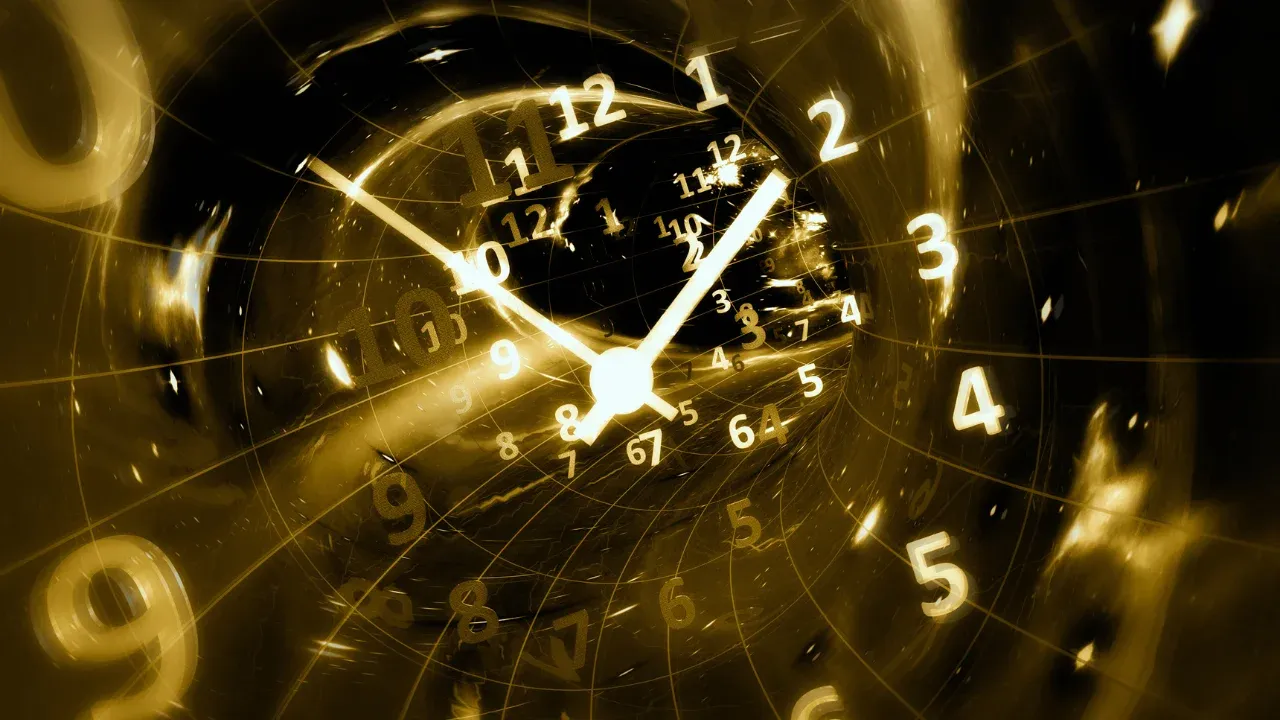
Table of Contents
Time travel in fiction can open your story to infinite possibilities. Ever wondered what it would be like if somebody taught the Romans how to make a nuclear bomb? Do you need to retcon an event in your story? Time travel!
It may seem simple for your time-traveling characters to hop in Tony’s Terrific Temporal Transport and whiz through time, but there are many hurdles to overcome when writing about time travel.
Chief among these is dealing with time travel paradoxes, so let’s look at those, discuss how you can write convincing time travel stories, and explore how some popular stories handle it.
The Problem With Time Travel
Consider an ordinary day in your life. It follows a sequence of events where one thing leads to another. This is called causality , the concept that everything that happens results from events that happened before it. The problem with time travel in fiction, especially travel to the past, is that it often breaks the rules of causality.

This can lead to time travel paradoxes and unforeseen results , including:
- Continuity paradoxes: The act of time travel renders itself impossible.
- Closed causal loop paradoxes: Traveling to the past creates a condition where an idea, object, or person has no identifiable origin and exists in a closed loop in time that repeats infinitely.
- The butterfly effect: Even the smallest action can have massive consequences.
With all that in mind, let’s embark on a journey through time and explore these further!
Grandfather Paradox
This thought experiment posits the idea of somebody traveling back in time and killing their grandfather before their parents were born. Because the grandfather never has children, the time traveler—his grandchild—cannot exist.
However, if the time traveler never existed, they couldn’t kill their grandfather, so he would go on to have children and grandchildren. One of those grandchildren is the time traveler, though, who might go back in time and kill their grandfather. If that seems confusing, it’s okay—it’s supposed to be.
The bottom line is that if somebody travels to the past and changes something that prevents them from ever traveling to the past, they have broken the timeline's continuity.
Polchinski’s Paradox
American theoretical physicist Joseph Polchinski removed human intervention from the time travel equation.
Imagine a billiard ball travels into a wormhole, tunnels through time in a closed loop, and emerges from the same wormhole just in time to knock its past self away.
Doing so prevents it from ever entering the wormhole and traveling through time, to begin with. However, if it does not travel back in time, it cannot emerge to knock itself out of the way, giving it a clear path to travel back in time.
Bootstrap Paradox
The Bootstrap Paradox is the first closed causal loop paradox we will explore. This presents a situation where an object, idea, or person traveling to the past creates the conditions for their existence, leading to it having no identifiable origin in the timeline.
Imagine sending the schematics for your time machine to your past self, from which you create a time machine. Where did the knowledge of how to create the time machine begin?
Predestination Paradox
The most nihilistic of paradoxes explores the idea that nothing we do matters, no matter what. Events are predetermined to still occur regardless of when and where you travel in time.
Suppose you time travel to the past to talk Alexander the Great out of invading Persia, but he hadn’t even considered this until you mentioned it. By traveling to the past to prevent Alexander’s conquest, you caused it.
Butterfly Effec t
Less of a paradox and more an exploration of unintended consequences, the butterfly effect explores the idea that any action can have sweeping repercussions, no matter how small.
In the 1960s, meteorologist Edward Lorenz discovered that adding tiny changes to computer-based meteorological models resulted in unpredictable changes far from the origin point. In traveling back in time, we don’t know what effect even minor changes might have on the timeline.
How to Write Convincing Time Travel Stories
Time travel can be pretty complex at the best of times, but that doesn't mean writing about it has to be a challenge. Here are a few practical tips to craft narratives that crack the temporal code.

Ask Yourself, "Why Time Travel?"
If your story has time travel, to begin with, it likely plays a pretty significant role in the narrative. Define the purpose that time travel has in your story by asking yourself questions like:
- How and why is time travel possible in your setting?
- What does it mean for your story and your characters?
- What are your characters meant to use time travel for?
- Is the actual practice of time travel different from its intent?
If you can't be clear about time travel's purpose in your story, how can you convincingly write about it? To get crafty with time, you first need to master its relevant mechanics.
Keep a Record of Everything
You're asking your reader to potentially make several mental leaps when time travel is involved in a story, so it's imperative to have all of your details sorted. Do the work of planning out dates and events ahead of time by creating a time map for yourself—like a mindmap, but for a timeline.

You'll be able to keep a birds-eye view of the narrative at all times, be more strategic about moving the order of events around, and ensure that you never miss a detail. You may even want to have multiple versions—a strictly linear timeline and a more loosely structured time map where you draw connections between events and in the order they appear in the narrative.
In Campfire, you can do both with the Timeline Module —create as many Timelines as you want by using the Page feature in the element. You can also connect your Timeline(s) to a custom calendar from the Calendar Module for extra fun with time wonkiness in your world.
If a new idea pops up while writing, don't stress! You'll have your handy time map already laid out so you can easily see if a new scene or chapter makes sense, as well as where it will best fit into the narrative.
Never Forget Causality
I mentioned this concept earlier in the article, but it should be reiterated: The most important rule of time travel is that every action results in a consequence. Remember cause and effect : an action is taken (your character time travels to the past), and causes an effect, the consequence (the timeline is forever changed).
"Consequence" doesn't have to be a negative thing, either, even though the word has that connotation. The resulting consequence of a given action could be a positive effect, too.
Regardless, seek to maintain causality so you don't confuse your readers (or yourself, for that matter). Establishing clear rules for how time travel works in your setting and sticking to them will help you keep your time logic consistent and avoid running into narrative dead ends or plot holes.
Tips & Tricks For the Time-Traveling Author
Now that we’ve examined several obstacles you can encounter when writing about time travel, let’s see how you can either avoid them or exploit them. That’s right! Even time travel paradoxes present opportunities for superb storytelling.
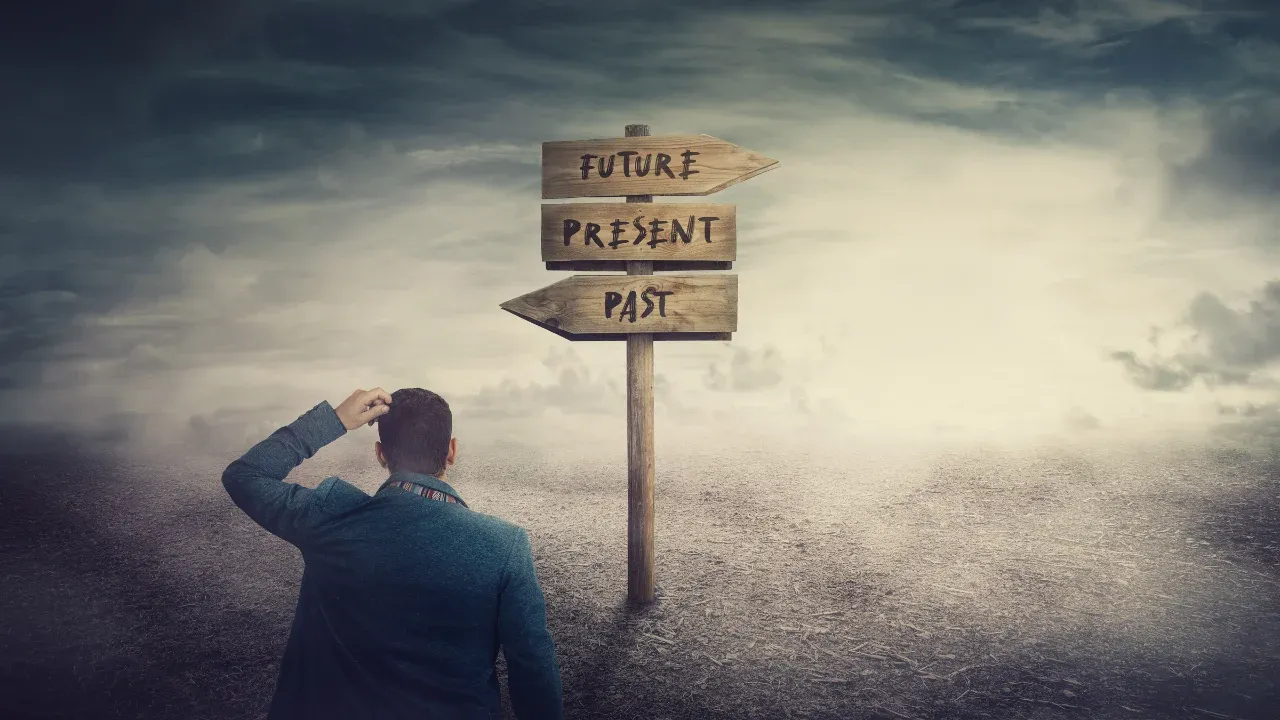
Focus on the Future
Fortunately, all the named paradoxes here involve the past, so the easy way to avoid them is to not go there! Thanks to Einstein’s theory of special relativity, you don’t even have to invent a clever way to travel instead to the future.
An aspect of Einstein's theory is time dilation , in which the faster an object moves through space, the slower it moves through time. With this, you need only zip around at near the speed of light for a few weeks or months, and when you come back to Earth, years or centuries will have gone by.
Create a Multiverse
A popular trope in science fiction today, and a theory gaining popularity among theoretical quantum physicists, is the multiverse concept. According to multiverse theory, whenever an event occurs, every possible outcome of the event happens simultaneously, splitting the universe into parallels that each contain differing outcomes.
Since all these realities exist, perhaps changing the past is simply a way for time travelers to travel between realities, shifting their perspective to a timeline where things occurred differently than in their original reality.
Get Creative With Consequences
Instead of avoiding paradoxes, maybe you want them to occur. Leading to some fascinating stories, this can be approached in a variety of ways. Perhaps you want to examine the unintended consequences of the butterfly effect, create a time-traveling police force that enforces the laws of time travel, or simply break time itself and revel in the chaos that ensues.
Just be sure to remember the action-consequence rule and keep your timeline handy for easy reference—especially if you're toying around with multiple timelines!
Best Time Travel Stories
What follows are what I think are some of the best time travel stories. As you will see, the first two fall victim to time travel paradoxes, while the other two do a great job of exploring various elements we’ve discussed.
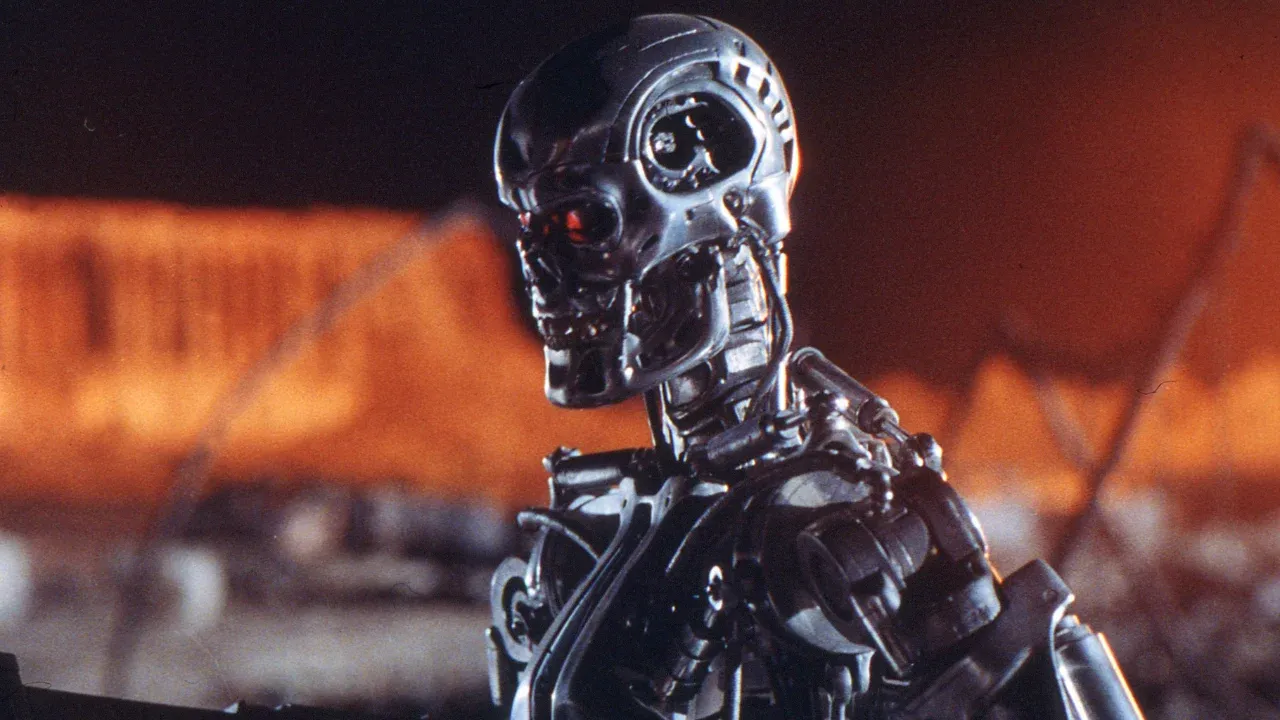
Terminator 2: Judgment Day
The corporation Cyberdyne Systems has remnants of the Terminator from the first movie, which they use to create an artificial intelligence system called Skynet. Skynet then actually creates the terminators and sends one back in time. Thus, it gives humanity the technology to create itself in a classic example of a bootstrap paradox.
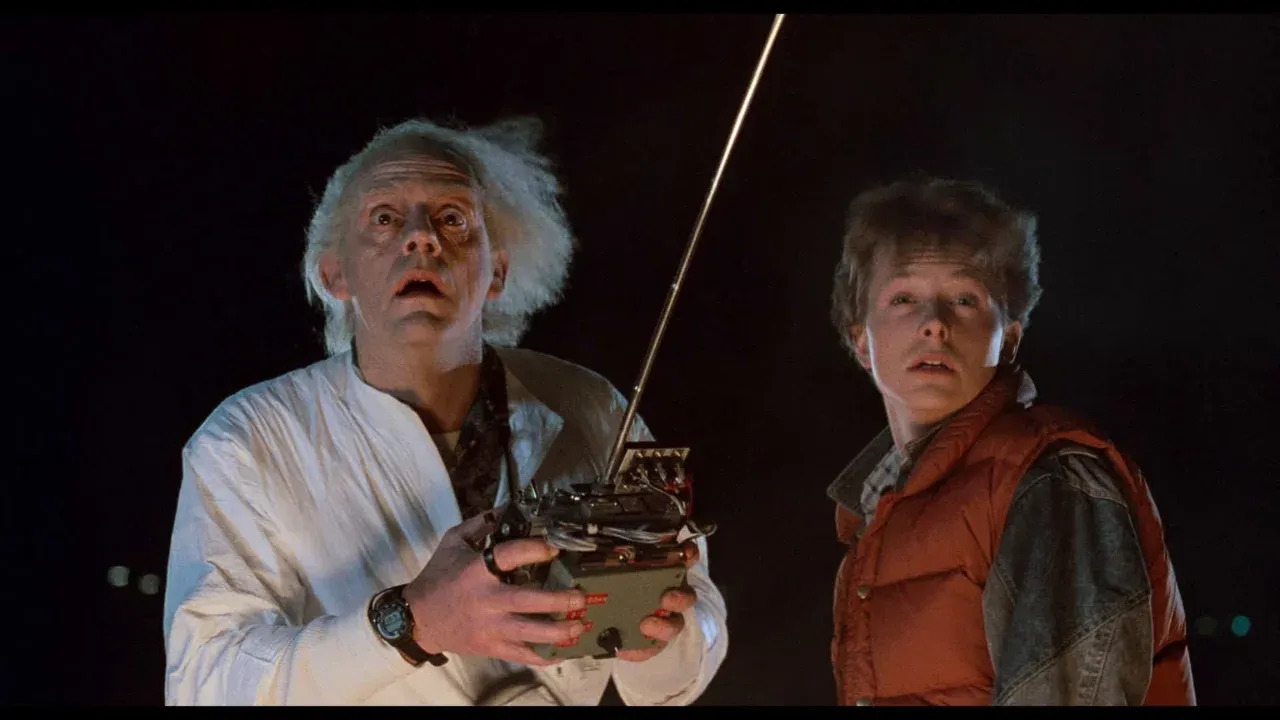
Back to the Future
In this film, Marty McFly travels to the past and inadvertently interrupts the event where his parents first meet. This causes a chain of events where Marty’s parents never get married and have children, threatening to erase Marty and his siblings from the timeline.
Some argue that the McFly offspring ceasing to exist is a great exploration of the consequences of time travel. However, they would never have been at risk had Marty not been in the past to impede their parents’ romance. And if he ceases to exist, he’ll never go back and get in the way, thus creating a grandfather paradox.
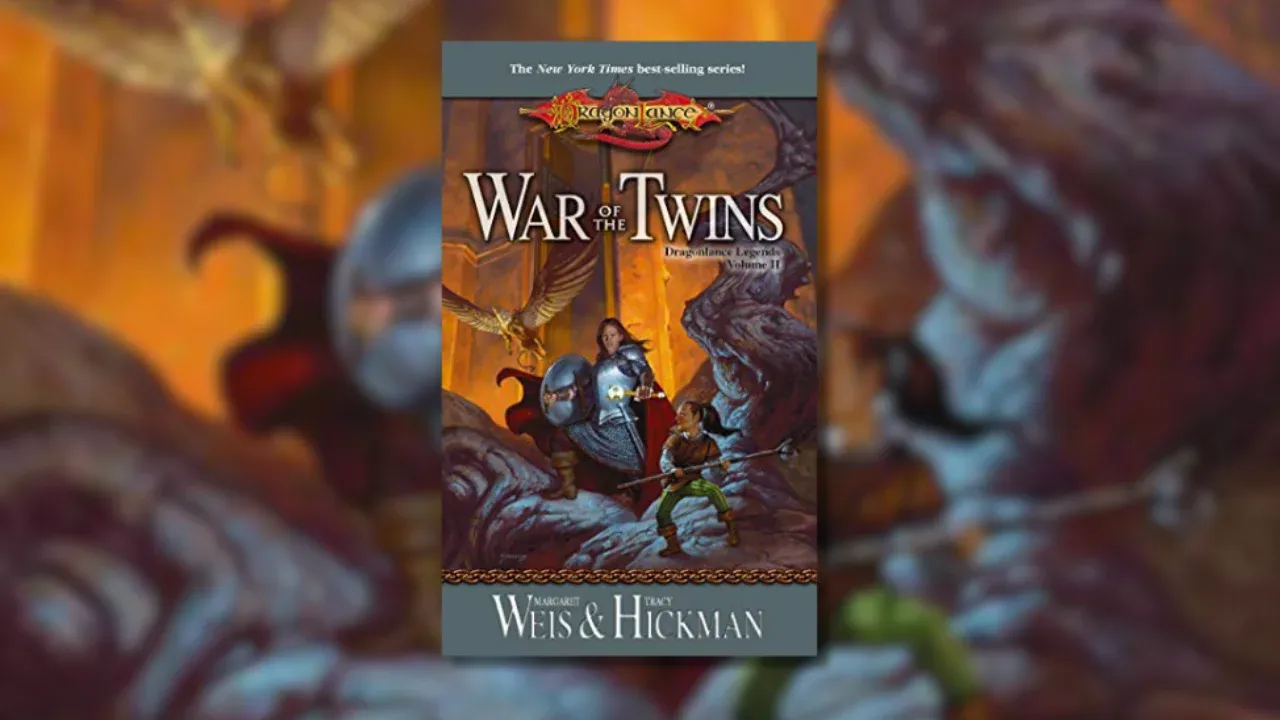
War of the Twins
In this second volume of the Dragonlance Legends trilogy by Margaret Weis and Tracy Hickman, the mage Raistlin Majere travels into the past, kills a wizard named Fistandantilus in a battle for power, and assumes his identity. Throughout the book, Raistlin unwittingly follows the historical fate of Fistandantilus, in a wonderful exploration of the predestination paradox.

It’s hard to talk about time travel in fiction these days without mentioning Loki. The show explores two suggestions from my list above: the multiverse and policing the timeline. In this series, varying outcomes of events lead to branching timelines, creating a multiverse of possibilities. However, an agency called the Time Variance Authority exists to prevent this from happening, and they set out to eliminate any branches separate from what they consider the Sacred Timeline.
Bon Voyage!
I hope this exploration of time travel leaves you prepared to tackle these obstacles and opportunities that naturally present themselves when playing around with time.
Just knowing about the complexities of time travel and the paradoxes it can bring about is the best way to avoid trouble and create innovative storytelling moments. So, dust off your DeLorean, polish your paradox-proof plot, and get ready to write your adventure through the ages!
Learn more about making a timeline with Campfire in the dedicated Timeline Module tutorial . And be sure to check out the other plotting and planning articles and videos here on Learn, for advice on how to plan your very own time travel adventures!

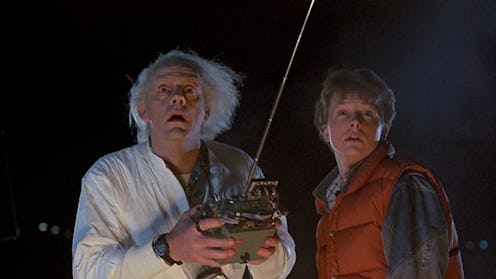
Do you believe in time travel? I’m a skeptic myself — but if these people’s stories about time travel are to be believed, then I am apparently wrong. Who knows? Maybe one day I’ll have to eat my words. In all honesty, that might not be so bad — because the tradeoff for being wrong in that case would be that time travel is real . That would be pretty rad if it were true.
Technically speaking time travel does exist right now — just not in the sci fi kind of way you’re probably thinking. According to a TED-Ed video by Colin Stuart, Russian cosmonaut Sergei Krikalev actually traveled 0.02 seconds into his own future due to time dilation during the time he spent on the International Space Station. For the curious, Krikalev has spent a total of 803 days, nine hours, and 39 minutes in space over the course of his career.
That said, though, many are convinced that time dilation isn’t the only kind of time travel that’s possible; some folks do also believe in time travel as depicted by everything from H. G. Wells’ The Time Machine to Back to the Future . It’s difficult to find stories online that are actual accounts from real people — many of them are either urban legends ( hi there, Philadelphia Experiment ) or stories that center around people that I’ve been unable to verify actually exist — but if you dig hard enough, sincere accounts can be found.
Are the stories true? Are they false? Are they examples of people who believe with all their heart that they’re true, even if they might not actually be? You be the judge. These seven tales are all excellent yarns, at any rate.
The Moberly–Jourdain Incident

In 1901, two Englishwomen, Anne Moberly and Eleanor Jourdain , took a vacation to France. While they were there, they visited the Palace of Versailles (because, y’know, that’s what one does when one visits France ). And while they were at Versailles, they visited what’s known as the Petit Trianon — a little chateau on the palace grounds that Louis XVI gave to Marie Antoinette as a private space for her to hang out and do whatever it was that a teenaged queen did when she was relaxing back then.
But while they were there, they claimed, they saw some… odd occurrences. They said they spotted people wearing anachronistic clothing, heard mysterious voices, and saw buildings and other structures that were no longer present — and, indeed, hadn’t existed since the late 1700s. Finally, they said, they caught sight of Marie Antoinette herself , drawing in a sketchbook.
They claimed to have fallen into a “time slip” and been briefly transported back more than 100 years before being jolted back to the present by a tour guide.
Did they really travel back in time? Probably not; various explanations include everything from a folie a deux (basically a joint delusion) to a simple misinterpretation of what they actually saw. But for what it’s worth, in 1911 — roughly 10 years after what they said they had experienced occurred — the two women published a book about the whole thing under the names Elizabeth Morison and Frances Lamont simply called An Adventure. These days, it’s available as The Ghosts of Trianon ; check it out, if you like.
The Mystery Of John Titor

John Titor is perhaps the most famous person who claims he’s time traveled; trouble is, no one has heard from him for almost 17 years. Also, he claimed he came from the future.
The story is long and involved, but the short version is this: In a thread begun in the fall of 2000 about time travel paradoxes on the online forum the Time Travel Institute — now known as Curious Cosmos — a user responded to a comment about how a time machine could theoretically be built with the following message:
“Wow! Paul is right on the money. I was just about to give up hope on anyone knowing who Tipler or Kerr was on this worldline.
“By the way, #2 is the correct answer and the basics for time travel start at CERN in about a year and end in 2034 with the first ‘time machine’ built by GE. Too bad we can’t post pictures or I’d show it to you.”
The implication, of course, was that the user, who was going by the name TimeTravel_0, came from a point in the future during which such a machine had already been invented.
Over the course of many messages spanning from that first thread all the way through the early spring of 2001, the user, who became known as John Titor, told his story. He said that he had been sent back to 1975 in order to bring an IBM 5100 computer to his own time; he was just stopping in 2000 for a brief rest on his way back home. The computer, he said, was needed to debug “various legacy computer programs in 2036” in order to combat a known problem similar to Y2K called the Year 2038 Problem . (John didn’t refer to it as such, but he said that UNIX was going to have an issue in 2038 — which is what we thought was going to happen back when the calendar ticked over from 1999 to 2000.)
Opinions are divided on whether John Titor was real ; some folks think he was the only real example of time travel we’ve ever seen, while others think it’s one of the most enduring hoaxes we’ve ever seen. I fall on the side of hoax, but that’s just me.
Project Pegasus And The Chrononauts

In 2011, Andrew D. Basiago and William Stillings stepped forward, claiming that they were former “chrononauts” who had worked with an alleged DARPA program called Project Pegasus. Project Pegasus, they said, had been developed in the 1970s; in 1980, they were taking a “Mars training class” at a community college in California (the college presumably functioning as a cover for the alleged program) when they were picked to go to Mars. The mode of transport? Teleportation.
It gets better, too. Basiago and Stillings also said that the then- 19-year-old Barack Obama , whom they claimed was going by the name “Barry Soetero” at the time, was also one of the students chosen to go to Mars. They said the teleportation occurred via something called a “jump room.”
The White House has denied that Obama has ever been to Mars . “Only if you count watching Marvin the Martian,” Tommy Vietor, then the spokesman for the National Security Council, told Wired’s Danger Room in 2012.
Victor Goddard’s Airfield Time Slip

Like Anne Moberly and Eleanor Jourdain, senior Royal Air Force commander Sir Robert Victor Goddard — widely known as Victor Goddard — claimed to have experienced a time slip.
In 1935, Goddard flew over what had been the RAF station Drem in Scotland on his way from Edinburgh to Andover, England. The Drem station was no longer in use; after demobilization efforts following WWI, it had mostly been left to its own devices. And, indeed, that’s what Goddard said he saw as he flew over it: A largely abandoned airfield.
On his return trip, though, things got… weird. He followed the same route he had on the way there, but during the flight, he got waylaid by a storm. As he struggled to regain control of his plane, however, he spotted the Drem airfield through a break in the clouds — and when he got closer to it, the bad weather suddenly dissipated. But the airfield… wasn’t abandoned this time. It was busy, with several planes on the runway and mechanics scurrying about.
Within seconds, though, the storm reappeared, and Goddard had to fight to keep his plane aloft again. He made it home just fine, and went on to live another 50 years — but the incident stuck with him; indeed, in 1975, he wrote a book called Flight Towards Reality which included discussion of the whole thing.
Here’s the really weird bit: In 1939, the Drem airfield was brought back to life. Did Goddard see a peek into the airfield's future via a time slip back in 1935? Who knows.
Space Barbie

I’ll be honest: I’m not totally sure what to do with thisone — but I’ll present it to you here, and then you can decide for yourself what you think about it. Here it is:
Valeria Lukyanova has made a name for herself as a “human Barbie doll” (who also has kind of scary opinions about some things ) — but a 2012 short documentary for Vice’s My Life Online series also posits that she believes she’s a time traveling space alien whose purpose on Earth is to aid us in moving “from the role of the ‘human consumer’ to the role of ‘human demi-god.’”
What I can’t quite figure out is whether this whole time traveling space alien thing is, like a piece of performance art created specifically for this Vice doc, or whether it’s what she actually thinks. I don’t believe she’s referenced it in many (or maybe even any) other interviews she’s given; the items I’ve found discussing Lukyanova and time travel specifically all point back to this video.
But, well… do with it all as you will. That’s the documentary up there; give it a watch and see what you think.
The Hipster Time Traveler
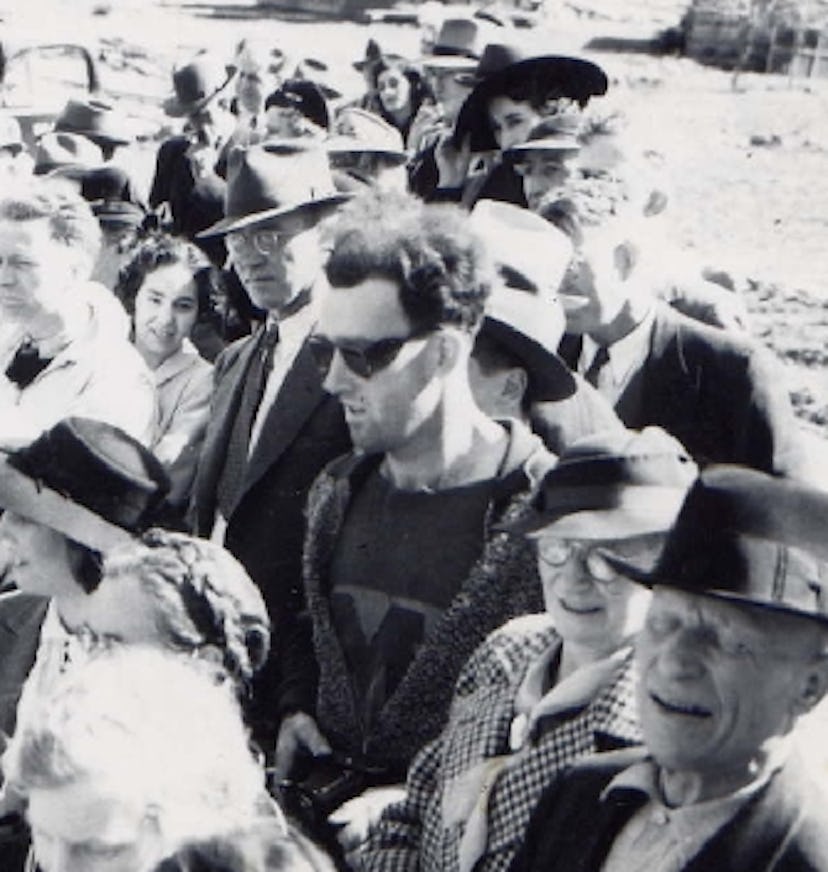
In the early 2010s, a photograph depicting the 1941 reopening of the South Fork Bridge in Gold Bridge, British Columbia in Canada went viral for seemingly depicting a man that looked… just a bit too modern to have been photographed in 1941. He looks, in fact, like a time traveling hipster : Graphic t-shirt, textured sweater, sunglasses, the works. The photo hadn’t been manipulated; the original can be seen here . So what the heck was going on?
Well, Snopes has plenty of reasonable explanations for the man’s appearance; each item he’s wearing, for example, could very easily have been acquired in 1941. Others have also backed up those facts. But the bottom line is that it’s never been definitively debunked, so the idea that this photograph could depict a man from our time who had traveled back to 1941 persists. What do you think?
Father Ernetti’s Chronovisor

According to two at least two books — Catholic priest Father Francois Brune’s 2002 book Le nouveau mystère du Vatican (in English, The Vatican’s New Mystery ) and Peter Krassa’s 2000 book Father Ernetti's Chronovisor : The Creation and Disappearance of the World's First Time Machine — Father Pellegrino Ernetti, who was a Catholic priest like Brune, invented a machine called a “chronovisor” that allowed him to view the past. Ernetti was real; however, the existence of the machine, or even whether he actually claimed to have invented it, has never been proven. Alas, he died in 1994, so we can’t ask him, either. I mean, if we were ever able to find his chronovisor, maybe we could… but at that point, wouldn’t we already have the information we need?
(I’m extremely skeptical of this story, by the way, but both Brune’s and Krassa’s books swear up, down, left, and right that it’s true, so…you be the judge.)
Although I'm fairly certain that these accounts and stories are either misinterpreted information or straight-up falsehoods, they're still entertaining to read about; after all, if you had access to a time machine, wouldn't you at least want to take it for a spin? Here's hoping that one day, science takes the idea from theory to reality. It's a big ol' universe out there.
10 Great Time Travel Stories: Part I
April 6, 2016.
Time travel has intrigued people for as long as, well, time. There are no hard and fast rules, but for over a hundred years writers have given us their take on how it works. Time travel allows us to imagine what it would be like to experience other worlds and consider what we would do if we could influence history or see the future.
We’ve picked out ten great ten time travel books take us through our own time – from Mark Twain’s Connecticut Yankee in King Arthur’s Court published in 1889 to Audrey Niffenegger’s Time Traveler’s Wife published in 2003.
Here are the first five on our list; stay tuned next week for five more time warping classics!
A Connecticut Yankee in King Arthur’s Court, Mark Twain (1889)
social satire, humor
Twain’s special gift for satire makes this story hilarious, fantastical and to the point. His comparative study and social commentary exposes his dissatisfaction of the romantic ideal of King Arthur’s world and faith in the scientific and social progress of his own time.
Twain starts by sending Hank Morgan, a self-reliant New Englander and engineer, back in time to King Arthur’s Court. Things go bad quickly and he is sentenced to death by Merlin. When Hank uses his knowledge of the nineteenth-century to save himself, he convinces the people, the King, and himself , that he is a magician greater than Merlin. He begins to transform King Arthur’s world where he transforms into the Boss.
Book eBook Audiobook
Time Machine, H.G. Wells (1895)
science fiction, fantasy, Darwinism, socialism
A forerunner of the science fiction genre, this classic novel popularized the concept of time travel and introduced the term “time machine”. Written in 1895, it is couched in a Darwinian and Socialist parable about a time traveler who is sent into the year 802,701. The traveler finds himself in a society of two races, the Eloi, peaceful dwellers who live above ground and the Morlocks, ape-like creatures who live below ground. It is a cautionary tale taking on the themes of evolution, capitalism, and social class division.
A Sound of Thunder, Ray Bradbury (1952)
science fiction, fantasy
Time travel, safari hunting and the opportunity to take down a Tyrannosaurus Rex. That’s what Time Safari offers its customers when it sends them sixty million years into the past. But there are strict rules and real dangers to anyone who breaks them. All travelers must stay on the designated Path provided by Time Safari. Anyone stepping off of it could create a ripple in time that could alter the future, the concept known as the “butterfly effect”. Bradbury asks us to consider our actions and how they effect the world. (In The Stories of Ray Bradbury and A Sound of Thunder and other Stories .)
Book Audiobook
The End of Eternity, Isaac Asimov (1955)
science fiction, romance
Considered his best by many, this short fiction novel places time travel outside of linear reality. The non-linear world, Eternity, is a location outside of time and place where an elite few, the Eternals, monitor and alter time’s cause and effect relationships. Andrew Harlan is an Eternal. On one of his assignments, he falls in love with a woman who lives in linear time only to find out she will not exist after the next change. He risks everything to bring her to Eternity with him, but his actions create a paradox that threatens the existence of Eternity. To fix the problem, he is given his next assignment. He must kill the woman he loves.
The Door into Summer, Robert A. Heinlein (1957)
This short fiction book is one of Heinlein’s lighter novels and uses time travel in a limited way. It begins in 1970. Dan Davis is the successful inventor of a household robot, an automated “cleaning lady” called Hired Girl . With the help of his fiancée, Belle and their friend Miles, his new company is thriving beyond his wildest dreams. But Belle and Miles betray him, steal his patents, and trick him into spending thirty years in suspended animation. They thought that was the end of Dan.
What they didn’t expect was that time travel exists in the year 2000. When Dan wakes up from thirty years of sleep, he is able to go back to 1970 where he recovers his research and then returns to the year 2000 with his reputation, invention and fiancée.

About the Author
IVY BRUNELLE is a Reference Librarian at PPL. She accidentally became a sci-fi geek in college. But if you asked her about it, she’d deny the whole thing, then silently slip through a portal of ancient standing stones.
- Craft and Criticism
- Fiction and Poetry
- News and Culture
- Lit Hub Radio
- Reading Lists

- Literary Criticism
- Craft and Advice
- In Conversation
- On Translation
- Short Story
- From the Novel
- Bookstores and Libraries
- Film and TV
- Art and Photography
- Freeman’s
- The Virtual Book Channel
- Behind the Mic
- Beyond the Page
- The Cosmic Library
- The Critic and Her Publics
- Emergence Magazine
- Fiction/Non/Fiction
- First Draft: A Dialogue on Writing
- The History of Literature
- I’m a Writer But
- Lit Century
- Tor Presents: Voyage Into Genre
- Windham-Campbell Prizes Podcast
- Write-minded
- The Best of the Decade
- Best Reviewed Books
- BookMarks Daily Giveaway
- The Daily Thrill
- CrimeReads Daily Giveaway
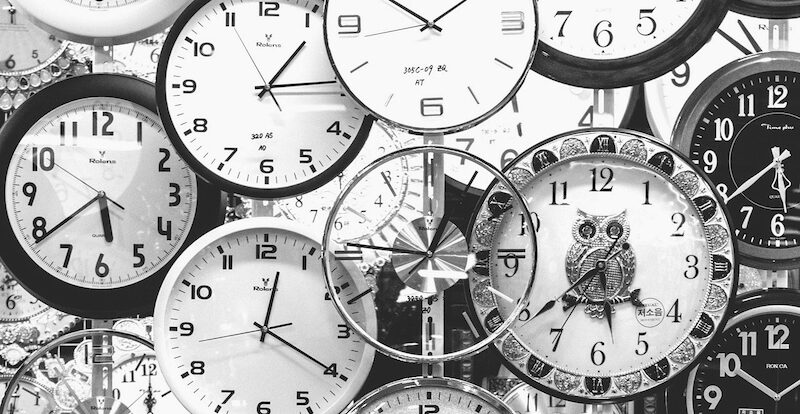
Time-Slips and Body Hopping: Eight Great Novels of Time Travel
James goodhand recommends kate atkinson, toshikazu kawaguchi, georgi gospodinov, and more.
What is it about time travel stories? Perhaps our fascination with them comes from exploring that mysterious place where science meets human experience. Or maybe they allow us to fantasize about seizing control of that one thing that rules our lives, that sets our decisions in stone, that gives us everything only to take it away again—the passage of time. Whatever the reason, our obsession with such tales is going nowhere.
In my forthcoming novel The Day Tripper , I ask: What if you woke up each morning in a different, random day of your life? This is the situation twenty-year-old Alex Dean finds himself in after a perfect evening in 1995 ends in disaster. Doomed to never knowing where—or rather when— each new dawn will take him, he must navigate his way through the years and piece together what happened after that fateful night. He’ll find that his decisions can have untold impact, even in a life lived out of order.
It’s a different spin on the time travel story, inspired in no small way by my favorite novels of the genre. The following are, to my mind, eight of the best:
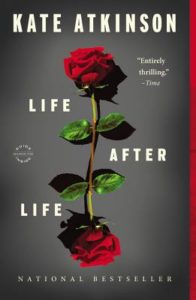
Life After Life by Kate Atkinson
Ursula Todd is born in 1910 and dies within minutes. Chapter two and her life begins once again. This time she survives till the age of four when she’s swept away on a family holiday. We follow Ursula’s progress across the twentieth century, as inevitably disasters befall her, be it Spanish flu or German bombers or a slippery roof at home. Each time her life begins again, she has an inkling of what’s gone before, and a sense that this is happening to her for a reason (which it is, but I won’t spoil it here).
It’s a book that is most remarkable as a study in how different our lives can turn out but for a few twists of fate. As with many of the best speculative novels, Life After Life takes a big concept, and uses it as a lens to focus in on the vagaries of the human condition.

The 7 1/2 Deaths of Evelyn Hardcastle by Stuart Turton
An Agatha Christie style murder mystery with a body-hopping, time-looping sleuth, this novel is a work of genre-crossing genius. Set in a stately home in the 1920s, the story sees the titular character shot at midnight during her own birthday party. Our reluctant detective Aiden Bishop wakes each morning in the body of a different party guest, each new perspective lending him another chance to stop the murder before it happens. A quite stunning concept, but Turton’s brilliance doesn’t end there. Since this novel first published in 2018, the golden age murder mystery had enjoyed a resurgence. But there’s no misplaced nostalgia on show here. Instead the author has a clear-eyed view of this era’s flaws; with wit redolent of Roald Dahl, he pokes fun at his characters’ greed and fecklessness and misuse of their privilege.
A clever, fun, and complex book. Just don’t try and work out who the murderer is, it’ll drive you nuts!
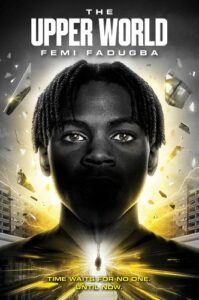
The Upper World by Femi Fadugba
Set in Peckham, South London, this young-adult novel expertly blends urban realism with some serious science. When sixteen-year-old Esso has a run-in with a Range Rover on his way to school, he experiences a horrifying vision of a shooting that coming evening. In a separate timeline, a much older Esso (now a doctor, and now blind) is mentoring Rhia, a girl whose mother was tragically killed many years earlier. The two stories intersect with a thrilling sense of time running out.
A physicist by profession, this novel was born of Fadugba’s desire to bring Einstein’s theories to life, something he achieves in a way that never feels dumbed down. Along with the tight plot, the reader gets to enjoy discussions about, for example, the idea that the faster we move through 3D space, the slower we move through time—conversations conducted in an authentic South London vernacular reminiscent of Top Boy . It’s deeply clever, enthralling stuff.
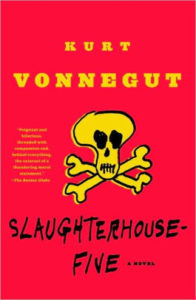
Slaughterhouse 5 by Kurt Vonnegut
As well as imparting a thousand nuggets of wisdom that are still being shared daily on social media, Kurt Vonnegut also wrote some books. None embody his trademark wit and inventiveness better than his 1969 novel, Slaughterhouse 5 . The main character Billy Pilgrim becomes unstuck in time. An American soldier, he finds himself on a whistle-stop tour of the twentieth century’s conflicts. To my knowledge, it’s the first example of block universe theory being used as a literary device. Informed by the author’s own spell in a German prisoner of war camp, this is a vehemently anti-war novel. In fact, it originally published with the subtitle “The Children’s Crusade, A Duty-dance with Death,” a none-too-subtle dig at war’s expectation that the young sacrifice themselves for the interests of their elders.
Funny, profound and edgy, I adore this book. And if the quality of a novel can be judged from how often it’s banned in schools, Slaughterhouse 5 is among the all time greats.

Before the Coffee Gets Cold by Toshikazu Kawaguchi
This quirky novel tells the story of a Japanese basement café, in which patrons are able to travel through time. They have to sit in one particular seat though, and nothing they do will change the present, and they must wait for the ghost who usually occupies the seat to go to the toilet. Oh, and they can only time travel for however long it takes for their coffee to go cold. The story may be obsessed with its own rules, but the author pays no such heed to the accepted rules of novel writing. The book takes the form of four short stories of time travel, interspersed by the goings-on amongst the café staff which gives it a cozy, soap-opera feel.
It’s a quick and touching read. However, should you have a thirst for more, there have since been three sequels with another due later this year.
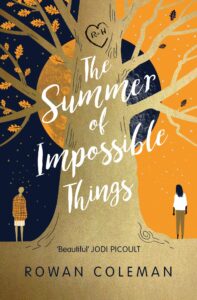
The Summer of Impossible Things by Rowan Coleman
In this fine example of the timeslip novel, British sisters Luna and Pia travel to their mother’s childhood home in Brooklyn to settle her affairs after her death. It soon becomes clear that something terrible happened to their mother here. Luna finds herself slipping between the present day and summer 1977 where she becomes friends with her young mother. She is soon on a mission to reverse her Mum’s awful fate, even though it risks her own very existence in the future.
It may touch on some dark themes, but the love story that smolders throughout against the backdrop of New York’s Saturday Night Fever era makes this a fabulously evocative, uplifting read.
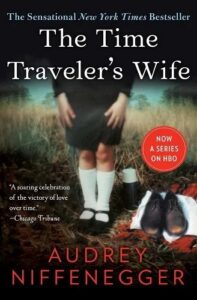
The Time Traveller’s Wife by Audrey Niffenegger
“Why is love intensified by absence?” So asks our female protagonist Clare Abshire, barely three paragraphs in. It’s a sentence that neatly encapsulates the soul of this modern classic. Because this is not a story about time-travel so much as one about love. Sure, Clare’s husband Henry is prone to disappearing without warning, doomed to land somewhere else in time, naked and penniless. But this affliction allows Niffenegger to construct a love story that we can all relate to: the longing, that unsettling feeling that we aren’t on the same page as our beloved, the sense of being brought together by some fate or higher power.
It’s difficult to say anything about this absolute blockbuster that’s not already been said. Except perhaps to pass on my recent discovery that there’s a sequel on the way. It’s called The Other Husband , and I can’t wait!
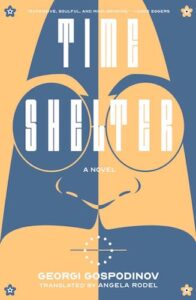
Time Shelter by Georgi Gospodinov
Ok, so I’m taking a liberty here with the definition of time travel, because this 2023 International Booker winner has no sci-fi element to it. This is the story of a Bulgarian therapist who founds a clinic for Alzheimer’s sufferers consisting of rooms that are perfect recreations of bygone eras, taking the patients back to the surroundings of their youth. It proves so popular that soon perfectly healthy people are checking themselves in for a dose of nostalgia. Before long, all of Europe is going crazy for the past with each country holding a referendum on which decade they want to return to.
It’s time travel meets political satire, though in this era of Brexit and of calls to make our countries Great Again, it’s hardly a whimsical read.
__________________________________
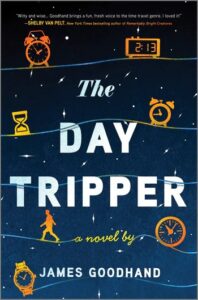
The Day Tripper by James Goodhand is available from MIRA Books, an imprint of HarperCollins Publishers.
- Share on Facebook (Opens in new window)
- Click to share on Twitter (Opens in new window)
- Click to share on Google+ (Opens in new window)
- Click to share on LinkedIn (Opens in new window)
- Click to share on Reddit (Opens in new window)
- Click to share on Tumblr (Opens in new window)
- Click to share on Pinterest (Opens in new window)
- Click to share on Pocket (Opens in new window)

James Goodhand
Previous article, next article, support lit hub..

Join our community of readers.
to the Lithub Daily
Popular posts.

Follow us on Twitter

In Search of Visibility: Kao Kalia Yang on Sharing the Hmong Refugee Experience
- RSS - Posts
Literary Hub
Created by Grove Atlantic and Electric Literature
Sign Up For Our Newsletters
How to Pitch Lit Hub
Advertisers: Contact Us
Privacy Policy
Support Lit Hub - Become A Member
Become a Lit Hub Supporting Member : Because Books Matter
For the past decade, Literary Hub has brought you the best of the book world for free—no paywall. But our future relies on you. In return for a donation, you’ll get an ad-free reading experience , exclusive editors’ picks, book giveaways, and our coveted Joan Didion Lit Hub tote bag . Most importantly, you’ll keep independent book coverage alive and thriving on the internet.

Become a member for as low as $5/month
- Translators
- Graphic Designers
Please enter the email address you used for your account. Your sign in information will be sent to your email address after it has been verified.
How to Write a Time Travel Story Without Paradoxes

The concept of time travel has long been a popular theme in fiction and film. Traveling back in time to alter the course of history is an alluring idea that has enthralled not just fiction writers but scientists as well. Yet, if you've ever seen or read a time travel story, you're aware that time travel is a tricky concept to grasp. It might be challenging to stay faithful to your worldbuilding concepts while simultaneously incorporating suitable temporal paradoxes.
For this reason, we will explore different paradoxes and go through various tips to help you write a time travel story without the risk of paradoxes.
Where does the idea of time travel come from?
Traveling across time is a shared universal dream. But where did the fascination with time travel begin, and why does the concept appeal to so many people? The lure of time travel has deeper origins. Appearing in some of our oldest stories , it is woven into the very fabric of our language and imagines a world without constraints of time and space. Its roots may be traced back to ancient tales of time travel found in numerous civilizations throughout the world, giving the notion its distinct characteristics derived from different cultures.
We come across time travel stories in ancient cultures throughout the world , although we cannot claim to know where the concept originally came from and who pioneered it. However, we can observe that the genre rose to prominence in the nineteenth century. From this time period comes Charles Dickens' classic novella A Christmas Carol , in which Ebenezer Scrooge travels both ahead and backwards in time. Around the same period, H.G. Wells popularized time travel in literature with his timeless novel The Time Machine , which featured the concept of a "time machine," which featured a vehicle that could travel purposefully and selectively in time. Inspired by this emblematic icon, many beloved time-travel stories published after this have incorporated some form of the time machine. Such is the famous TARDIS in the long-running BBC classic series Doctor Who , a blue box that can transcend time and space. Doctor who interestingly explores time travel paradoxes, with time paradoxes taking a center stage for many of its episodes.
Time travel paradoxes
There are many logical contradictions when it comes to time travel. Here are some of the major paradoxes:
Bootstrap paradox
The Bootstrap Paradox is a theoretical paradox of time travel that arises when an object transported back in time becomes locked within an unending cause-effect loop. This occurs as the travel in time takes place as a response to a specific event.
Consistency paradox
Consistency Paradoxes , such as the Grandfather Paradox , or the Hitler paradox , a type of timeline mismatch that arises from the prospect of changing the past. These paradoxes change history in such a way that time travel into the past, which caused such action in the first place, is no longer possible. To simply illustrate the paradox, in the film The Time Machine , a protagonist builds a time machine to travel back in time in order to save his fiancé from death. Her rescue, on the other hand, would lead to a future in which the machine never existed since her death was the direct motivation for its creation. But then, how is it you can go back and save your fiancé if her death hasn't given you the push to create the time machine? It results in a paradox. The timeline is no longer self-consistent.
Butterfly effect
The Butterfly Effect is based on Chaos Theory , which states that seemingly minor changes may have massive cascade responses over extended periods of time and that even minor changes can fundamentally reshape history. The name "Butterfly Effect" originates from Ray Bradbury's short tale " A Sound of Thunder ," in which a character in prehistoric times walks on a butterfly, causing massive changes in the future.

How to avoid these paradoxes
The self-healing hypothesis.
Writers seeking to escape the paradoxes of time travel have devised a variety of inventive methods for presenting a more consistent picture of reality. The self-healing hypothesis is one of the most basic solutions to any time travel paradox, implying that no matter what is changed in the timeline, the principles of quantum physics will self-correct to prevent a contradiction from arising and sustain the existing flow .
Because events would adapt themselves, a paradox would not occur. So, changing the past will trigger another alternative chain reaction that will keep the present unaltered. This effectively states that the likelihood of a paradox arising in any given circumstance is zero. The self-healing hypothesis simply indicates that no matter what a traveler has done in the past, the end outcome is the same in terms of global conditions. This does not rule out the possibility of changing the past, but it does eliminate the prospect of minor changes having the power to generate massive ones. Most crucially, as an author, you are not obligated to describe the particular events that repair time. It is enough to affirm that they take place and ensure that your event sequences and their conclusion are consistent.
Time traveling monitor
Another way to avoid temporal paradox would be creating the time traveling monitor that would follow the timeline protection hypothesis , which posits that any attempt to create a paradox would fail to owe to a probability distortion. The monitor would adjust the probability in order to avert any damaging events occurring, which would also give you free rein to come up with creative scenarios. Nonetheless, to prevent an impossible event from taking place, the universe must favor an improbable event occurring.
Balancing the timeline
The paradoxes themselves are intertwined and they can as well occur simultaneously. No one knows if a real-life paradox would result in a large-scale timeline alteration, or if the closed-loop is kind of automatically self-correcting since everything works out equally in the end. Going back to the Consistency Paradox, yet another approach to avoid it is to acknowledge, regretfully, that you can't and shouldn't attempt to change the past. That is unless you can rule out any chance of a bad domino effect as a result of your activities. In this manner, you can attempt to alter the past while keeping the chronology intact. This means following up the time-change event with another change that balances out the activities and ensures that the outcome remains the same despite the intervention.
The notion of a time loop is one of the most prevalent strategies to get away with time travel in science fiction. You may travel through time here, but any changes you make are predetermined. For example, suppose you were pushed out of the way of a car one day. You return to your timeline from the future and realize that that person was in reality you.
Paradoxes are avoided with this method of time travel, but everything is predetermined. If you wish to prevent a tragic incident from occurring in your past, there's nothing you can do since even if you could, it would still happen in the time loop. Whatever you did, the key events would just re-calibrate around you. This could be the solution for the Grandfather Paradox — that would mean that the event propelling you back in time would happen regardless of your actions, providing your younger self with the incentive to go back and stop it. To put it another way, a time traveler could make adjustments, but the original conclusion would still occur — perhaps not exactly as it did in the initial timeline, but near enough.
Parallel universe
There is also another possibility: creating a parallel universe . The future or past you visit might become a parallel reality. Consider it as a huge fortress where you may construct or demolish as many castles as you like, but it has no bearing on your primal stronghold. When you travel back in time, the future is gone, it never happened, and the universe will evolve anew, even if you do nothing to influence it. It does not affect the future you experienced, but it does affect the future of the reset world. That can entail creating a scenario in which the protagonists travel to the past and discover themselves in a parallel world or multiverse, with no change to their original chronology.
Countless science fiction stories have examined the conundrum of what would happen if you could travel back in time and do something that would jeopardize the future. Please note that you are free to make your own rules for it. This is your work of fiction. The universe will be as you will design it in your story. If the paradoxes do not exist in your story, then you may make up your own rules around it. You can as well bypass the rules your worldbuilding has established if you have a valid cause for doing so and if this is what your writing demands.
Related Posts
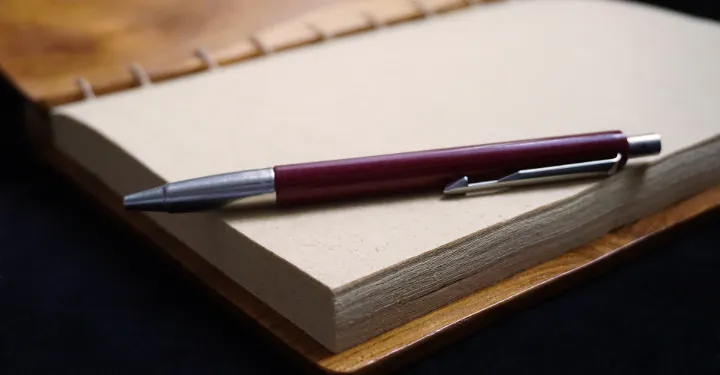
Writing a Memoir: How to Eliminate Your Fears and Doubts

15 Clever Book Promotion Ideas That Will Drive Sales
- Book Writing Advice
- All Blog Posts
- Writing Advice
- Academic Writing Advice
- Admissions Writing Advice
- Short Story Advice
- Employment Writing Advice
- Business Writing Advice
- Web Content Advice
- Article Writing Advice
- Magazine Writing Advice
- Grammar Advice
- Dialect Advice
- Editing Advice
- Freelance Advice
- Legal Writing Advice
- Poetry Advice
- Graphic Design Advice
- Logo Design Advice
- Translation Advice
- Blog Reviews
- Short Story Award Winners
- Scholarship Winners

Professional book editing services you can trust
- Share full article
Advertisement
Supported by
Letter of Recommendation
How I Became Obsessed With Accidental Time Travel
The web is awash with ordinary peoples’ stories of “time slips.” Their real magic is what they can tell us about our relationship to time.

By Lucie Elven
This year, I turned 30, a development that came with a breathless sense of dread at time’s passing. It wakes me up in the early mornings: Nocturnal terror breaks through the surface of sleep like a whale breaching for air. My ambition and fear kick in together until I get up, pour myself some water and look out the window at the squid-ink sky and the string of lights along my neighbors’ houses. I lie down again after finding firmer mental ground, dry land.
So when a guy that my friend was seeing evangelized about “time slips” — a genre of urban legend in which people claim that, while walking in particular places, they accidentally traveled back, and sometimes forward, in time — I was a ripe target. Curious and increasingly existential, I Googled these supposed time slips. I found a global community of believers building an archive of temporal dislocations from the present. These congregants gathered in corners of the internet to testify about how, in the right conditions, the dusting of alienation that settles over the world as we age can crystallize into collective fiction.
I was initially skeptical of the vague language that time-slip writers employed to convey experiences I already found dubious: too many uses of foggy words like “blunder” and “sporting”; detail lavished on varieties of hats encountered. But I was drawn in by their secretive tone — I sensed that sharing these anecdotes was compromising, even shameful (“People would laugh at you,” one poster wrote). Disapproval became attraction, and I returned to the message boards throughout the summer.
Here’s a classic that, like the best of these stories, was related secondhand on a paranormal blog: In a Liverpudlian street in 1996, an off-duty policeman named Frank was going to meet his wife, Carol, in a bookshop called Dillons when “suddenly, a small box van that looked like something out of the 1950s sped across his path, honking its horn as it narrowly missed him.” More disorienting still, Frank “saw that Dillons book store now had ‘Cripps’ over its entrance” and that there were stands of shoes and handbags in the window instead of new fiction. The only other person not wearing midcentury dress was a girl in a lime green sleeveless top. As Frank followed her into the old women’s wear boutique, “the interior of the building completely changed in a flash”; it was once again a bookshop.
I found a global community of believers building an archive of temporal dislocations from the present.
As with a spell of déjà vu, the experience was short-lived, and time was regained. According to the blogger’s detective-like report, Cripps “was later determined” to have been a business in the 1950s. In response to Frank’s slip, posters have told their own or related accounts they’ve heard from others: “This happened to my ex-boss, Glyn Jackson in London, England,” one begins. “Glyn’s story is Highly believable as Glyn is person who lacks imagination on such a scale that he could not put together a grade one story for English to save his life.” And on it goes.
I have never appreciated stories about the passage of time. I resent that I won’t ever get back the hours of my life that Richard Linklater stole with “Boyhood” — his two-and-three-quarter-hour film, shot over a 12-year period in which time is the force that overwhelms everything, not least the idea that our own actions drive our life stories. There’s a whole lot of unwelcome profundity there.
Time-slip anecdotes, though fashioned out of the ambient dread of living with the ticking clock, are childlike in their sense of wonder. They are light, playful and irrational, as frivolous and folky as a ghost story if it were narrated by the confused ghost instead of the people it haunts. One poster, as a girl, used to see a woman in a blue bathrobe in her room: “Her hair was long and messy, a reddish brown. I didn’t see her face because she was usually turned away. I used to mistake her for my mom.” Years later, grown up, the poster’s daughter slept in her former bedroom. “One day I realized ... I was wearing the same blue bathrobe,” the mother writes. Paranormal trappings aside, this story speaks to the feeling of whiplash brought on by time’s passing.
Slipping can be significant, as any Freudian will tell you, and these narratives are riddles whose answers might tell us about our relationship to time. I have begun considering the message boards on which they are exchanged to be narrow but important release valves, allowing posters to talk about the feelings that arise from being time-bound: depression, midlife crises, the dysmorphia of living in a human body. What ailed Miss Smith, whose car slid into a ditch after a cocktail party, and who witnessed “groups of Pictish warriors of the late seventh century, ca. 685 AD,” if not an understanding of her smallness in history’s vast expanse? Why did two academics, famous in the time-slip community for writing a book about spotting Marie Antoinette in the Versailles grounds, encounter trees that looked lifeless, “like wood worked in tapestry”? Perhaps in that instant, like the last queen of France’s Ancien Régime, they felt radically out of joint with their present moment.
If you suspend disbelief, you’ll find these threads constitute a philosophical inquiry about the place of the spirit in our physical beings. They debate the merits of subjectivity and objectivity and question the idea that time is a one-lane highway to death. These writers argue that our past and future can suffuse our present, unveiling an epic dimension of our quotidian existences in moments when we slip and, like Frank, feel eternity.
Lucie Elven is a writer whose first book of fiction, “The Weak Spot,” was published this year in the United States by Soft Skull Press and in Britain by Prototype.
Background photograph: George Marks/Getty Images
Explore The New York Times Magazine
Donald Trump’s Rally Rhetoric : No major American presidential candidate has talked like he now does at his rallies — not Richard Nixon, not George Wallace, not even Trump himself.
The King of Tidy Eating : Rapturously messy food reviews are all over the internet. Keith Lee’s discreet eating style rises above them all .
What Are Animals Really Feeling? : Animal-welfare science tries to get inside the minds of a huge range of species — in order to help improve their lives.
Can a Sexless Marriage Be Happy?: Experts and couples are challenging the conventional wisdom that sex is essential to relationships.
Lessons From a 20-Person Polycule : Here’s how they set boundaries , navigate jealousy, wingman their spouses and foster community.

Not Your Usual Time Travel Story Ideas (2024)
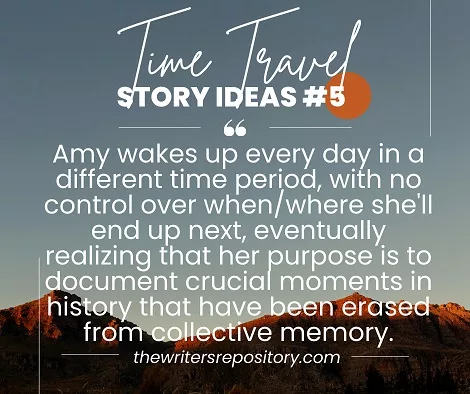
Looking for unusual time travel story ideas and writing prompts? You’ve come to the right place!
Read on for ideas like a world where time flows differently in different regions, a person with an ability to travel in their dreams, and more!
Jump to Section
- S tory ideas
Picture prompts
The time travel trope.
This post may contain affiliate links, which means that I may receive a commission, at no cost to you, if you make a purchase using these links.
Related posts: Tragic Love Story Ideas (2023) The Most Enticing Forbidden Love Story Ideas (Updated in 2023) 40+ Sad Backstory Ideas for Your Character (2023) 17+ Enticing Soulmate Story Ideas (2023)
Time Travel Story Ideas & Writing Prompts
Time travel has long been a captivating concept in storytelling, transporting us to narratives of endless possibilities. Now, let’s explore some unique and unconventional story ideas!
Please note that the genders in these prompts and story ideas are just placeholders and do not mean to enforce any hurtful stereotypes nor offend anyone.
Story ideas
From unexpected time travelers to unconventional methods of traversing through time, embark on a thrilling, time-bending adventure with these exciting ideas.
- Lost Time A group of explorers stumbles upon an alien-made, time-traveling elevator that can transport them to different moments within their own lifetime, at the cost of reduced longevity.
- Reversed A scientist makes a mistake in their time travel machine, which sends them spiraling into an alternate reality where time operates in reverse.
- Past and Future Memories In a post apocalyptic world, a person finds that they can jump into the past as well as potential future memories of others. Then, they navigate through different people’s experiences in the hope of finding a way to undo the effect of the apocalypse.
- Time is Money In a world where time flows differently in different regions, a society formed where time travelers exist and time itself can be a commodity. (Originally appeared in my post The Most Mesmerizing Fantasy World Ideas (2023) )
- Chronicler of Lost History A person wakes up every day in a different time period, with no control over when or where they’ll end up next. As they try to find out why, they realize that their purpose is to witness and document crucial moments in history that have been erased from collective memory.
- Time-Traveling Detective In a time when time travel is possible, a time-traveling detective agency specializes in solving crimes and incidents that occur across different points in time.
- Network of Selves There’s a new invention that allows people to split their consciousness into multiple timelines, creating a network of parallel selves.
- Tour Across Time Time travel is a regulated industry, and a tour guide accidentally takes a group of tourists to a time period that never existed, causing a ripple effect that alters the course of history.
- Time-Traveling Companion There’s a peculiar type of animals that have the innate ability to traverse time. Once they form a unique bond with a human, the bond will allow that human to time travel along with said animal.
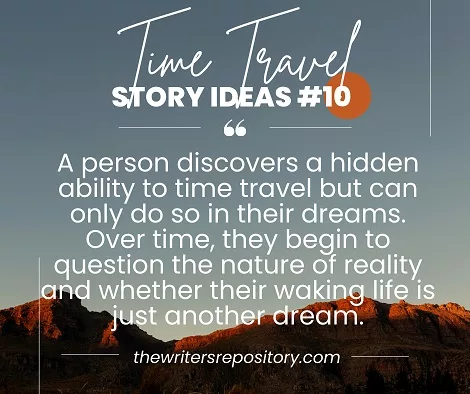
- The Time Capsule After unearthing a long-forgotten time capsule, a tight-knit group of friends is transported back to their younger selves. (A similar concept appeared in my post Beyond the Mundane: Captivating Slice of Life Story Ideas (2023) )
- The Time Thief A physicist accidentally creates a device that allows them to move between parallel universes. They exploit this power to commit crimes across dimensions, staying one step ahead of authorities.
- The Reversed Time Traveler A time traveler’s machine malfunctions, causing them to experience life in reverse. Frustrated by their reversed existence, they seek to disrupt the flow of time itself.
- Cheering Through Time An alien with the ability to explore different time periods gets stranded on earth and befriends a cheerleader. But as the two jump between time periods, they unwittingly start a chain of event that might spell catastrophe for both of their home planets.
- Happy Days Specific emotional triggers can create a quantum leap, launching individuals through time to a moment in the past or future when a similar emotional event occurred.
Here are some time travel picture prompts, because a picture speaks a thousand words! What kind of time travel prompt or story jumps out at you when looking at the picture prompts below?

The concept of time travel has fascinated storytellers for generations, offering endless possibilities and narrative intrigue, allowing writers to explore the complexities of cause and effect, challenge the boundaries of linear time, and delve into the profound impact of altering the past or glimpsing into the future.
In time travel stories, protagonists often find themselves in paradoxes and moral dilemmas as they attempt to correct past mistakes, change the course of history, or prevent catastrophic events where the smallest alteration can have far-reaching repercussions.
Time travel narratives also provide a fertile ground for exploring themes of identity, self-discovery, and the relentless march of time, prompting characters and readers alike to ponder the nature of free will and the fragility of existence.
If you need more story ideas and prompts, please browse our Story Ideas & Writing Prompts category!
Have any question or feedback? Feel free to contact me here . Until next time!
Related Posts
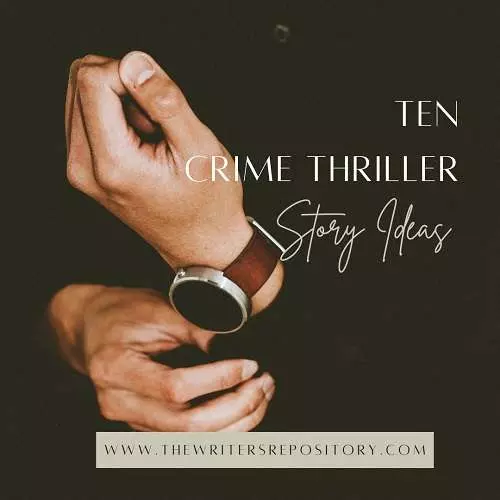
Crime Thriller Story Ideas That Captivate Us (Updated in 2024)

Tragic Love Story Ideas We’re Rooting For (Updated in 2024)
Enjoy this blog? Please spread the word :)

10 Ideas for a Time Travel Story
Here are 10 quick ideas for a time travel story, including everything from colonies in the distant past and future, to time traveling Jews, Jesus, and jealous husbands.
If one of these ideas inspires you to create a time travel story of your own, let us know and we’ll share it with out community!
1. Future War
A future dictator invades the past. He sends giant war machines into 19th Century London, Paris and Washington, and he demands that all world leaders surrender to him. It’s up to a team of time traveling heroes to stop him.
2. As Time Goes By
A scientist discovers that he can slow down time in a localized area. He can use this to visit the future (and stop off anywhere along the way), but he can never go back. At first, he uses the device to prolong his own life, spending a day inside the time-bubble as a month passes outside. Later, curiosity compels him to travel into the distant future in search of new wonders and a fresh start.
Our protagonist finds a future world full of wonders, and he begins to build a new life for himself. But when things start to go wrong, he finds himself traveling forward yet again. Eventually, the urge to travel forward becomes irresistible as he searches for perfection. Is he really searching for something, or just running from his own past?
As our traveler comes to the end of his life he realizes that, while he has seen more than most people, he hasn’t really lived at all. He’s spent his whole life running.
3. Doing Time
Using a time machine, a penal colony is established in Earths distant future – a future in which humanity is extinct and the sun is approaching the end of its natural life-cycle. When the end finally comes, do the guards evacuate the prisoners or leave them to their fate?
4. The Man You Used To Be
After his wife leaves him, a scientist travels back in time to be with her again. He’s determined to get it right the second time around, and thinks he knows what to do to keep her happy. But when he travels into the past he comes across an obstacle he hadn’t counted on – the past version of himself.
SEE ALSO: Travelling in time but NOT space
Desperate to be with his wife again, he plots to do the unthinkable – he plans to murder his past self and take his place.
There are two obvious ways in which this story could end, each equally as ironic. 1) He kills his former self and is happily reunited with his wife, but after spending one perfect day together the time paradox begins to kick in and he vanishes into oblivion. 2) He kills his former self, but his wife recognizes that he is not the man he used to be. Because of what he’s been through and what he’s done, he’s changed, and his wife can see it in his eyes. She leaves him again.
5. Future Tense
Fearing the extinction of humanity is on the horizon, a large group of humans travel into Earths distant future to avoid the catastrophe. They arrive in a time in which the Earth has recovered from the disaster, and in which all traces of human civilization have disappeared. Many animal species have evolved beyond recognition. In this new wilderness, they attempt to build a home.
Knowing that the end of human civilization is near, people are desperate to travel to the future colony. With a limited number of places available, people fight for the last remaining passes. Eventually, the future colony finds itself with too many mouths to feed.
6. Past Participants
With the destruction of Earth imminent, humanity begins colonizing the distant past. The colonization effort slowly begins to interfere with the timeline. Each group of colonists that arrives from the future has experienced a different version of history, with increasingly interesting results.
One group of time travel colonists is from a fascist timeline in which the Nazis won the Second World War, and they try to take over the colony. Another group reports having found the remains of the colony during a future archaeological dig, indicating that the colonization effort will eventually fail.
7. Populating Zion
A team of scientists rescue Jews from Nazi extermination camps by transporting them forward in time just before the moment of their deaths. Nazis are confounded when they open the doors to gas chambers and find that their victims have mysteriously vanished. In the future, thousands of rescued Jews struggle to understand what has happened to them, and they begin to hail the lead scientist as their Messiah.
8. Time Me Up, Time Me Down
After inventing a time machine, a scientist travels into his own future where he meets his beautiful future wife. Back in his own time, he meets his future wife for the first time (for her at least), but she isn’t interested in him. He tries his hardest to impress her but fails. How can this be when they are meant to be together?
Determined to win her heart, he travels back to their first meeting over and over again, trying something different each time. He even visits her past in an attempt to learn more about her, but nothing works. Becoming increasingly obsessed, he eventually resorts to kidnapping her. He takes her forward in time to show her their future life, but his actions have drastically changed the timeline.
9. Final Interview
A time travel agency sends a man to interview famous historic figures just hours before they die. The interviews are not only important to historians, they have also become a form of popular entertainment. After interviewing countless historic figures over a long and distinguished career, our protagonist has become something of a celebrity himself. One day, a younger man arrives at his home insisting that he be allowed to interview the protagonist. The protagonist realizes that the younger man is his future replacement, and that he himself is soon to die.
(Thanks to Jorgen Lundman for this idea, the full version of which can be read here )
10. Jesus vs The Time Police
The technology needed for time travel exists, but it has been outlawed by most of the world’s governments. A special police unit or federal agency uses specialist equipment to track down illegal time travelers and prevent them from damaging the timeline.
Some of the time travelers are attempting to alter their own past for personal gain, others are rich tourists seeking a thrilling but illegal encounter with the past. One day, however, they track down a time traveler who has managed to evade them for several years. He has been living in the past for all this time, and he claims to have become an important historical figure. Doing a little research, they determine his claims to be true. The time traveler has had a profound effect on the timeline, and undoing his actions might have profoundly negative consequences. He has written himself into history – a history that the time-police have always accepted to be true.
The illegal time traveler might be a famous general, monarch, or president. He might even be a religious figure, such as Jesus (as such, he may not have had an entirely positive effect on history, but a profound one nonetheless). If the illegal time-traveler is Jesus, might his ascension to heaven actually be his forced return to his own time, staged by the time-police?The time-police are faced with a dilemma – set the timeline straight and undo his actions without knowing what the result might be, or allow him to continue living in the past.
This article was written by Mark Ball . With thanks to Jorgen Lundman.
Use our Random Story Idea Generator for inspiration for more stories.

10 Time Travel Story Ideas with a Mystery
- Posted on 29 Dec, 2023
- Leave a comment
The Missing Artifact: In the year 3023, a renowned historian discovers an ancient relic rumored to possess time-traveling capabilities. Desperate to uncover its secrets, they embark on a journey through different eras, tracing the artifact’s origins. However, each leap through time reveals cryptic clues and unsolved mysteries, leading them on a perplexing trail where the artifact’s true purpose and the enigmatic figures behind its creation remain elusive.
The Time Loop Enigma: A physicist accidentally triggers a temporal loop, reliving the same day in various historical periods. As he navigates through different epochs, strange anomalies and clues emerge, suggesting a hidden pattern in the loop’s occurrences. The mystery deepens as they encounter echoes of their actions across time, uncovering a web of interconnected events that may hold the key to breaking free from the loop.
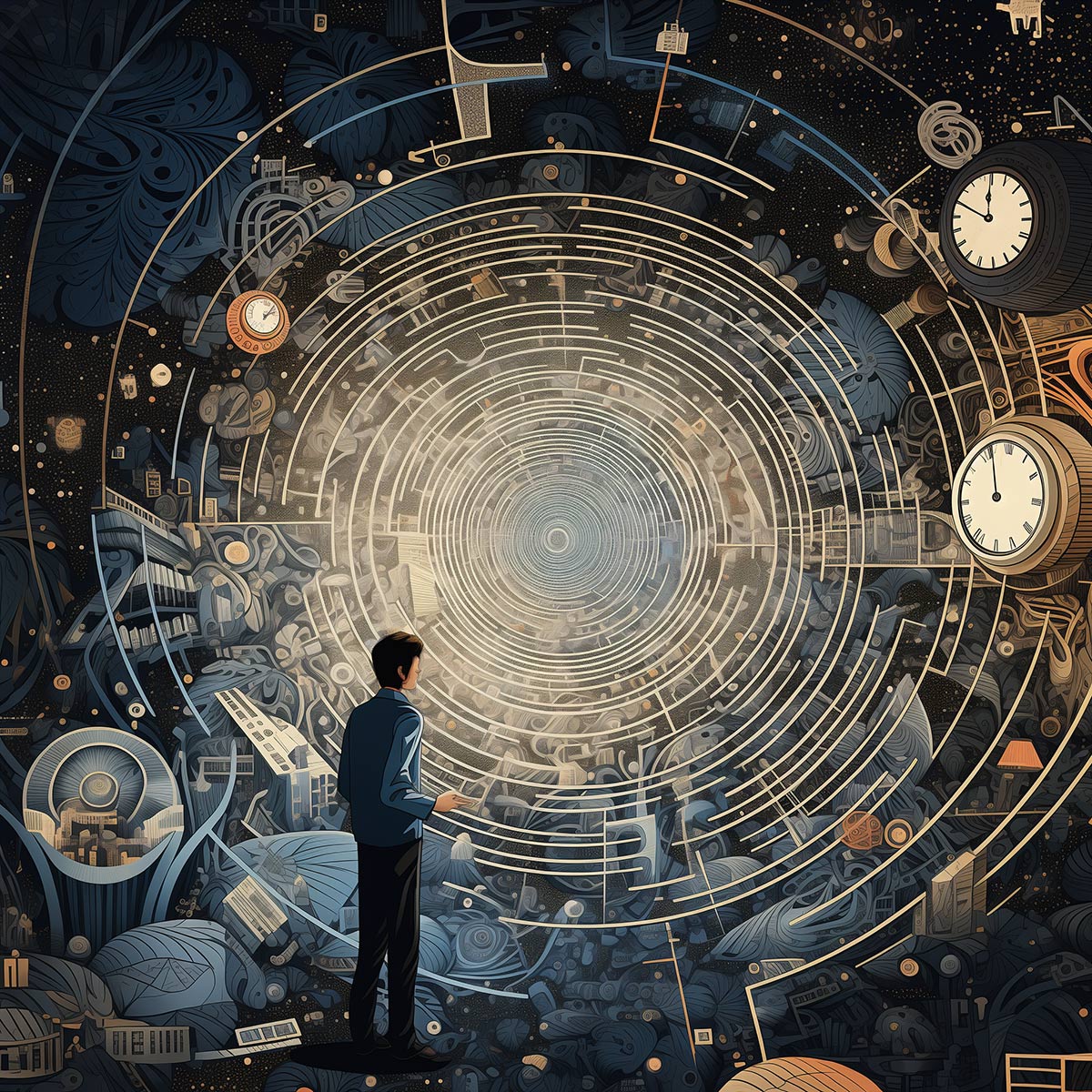
The Vanishing Colony: A group of time-traveling explorers visits an early American colony only to find it inexplicably deserted. Unraveling the mystery leads them through a series of temporal jumps, encountering clues left behind by the vanished settlers that hint at a secret society practicing temporal manipulation. Pursuing the truth puts them in a race against time as they navigate through history to prevent a catastrophic alteration of the timeline.
The Ghost Ship Expedition: A team of historians discovers an ancient maritime vessel that vanished without a trace centuries ago. As they investigate the ship’s disappearance, they find themselves inadvertently transported back to the ship’s final voyage. The eerie atmosphere and spectral occurrences hint at a temporal anomaly, forcing them to solve the mystery of the ship’s fate before they become trapped in the past.

The Time Traveler’s Journal: A researcher stumbles upon a journal filled with detailed accounts of time travel experiences. The journal’s author remains a mystery, but their accounts depict visits to pivotal moments in history. As the researcher follows the journal’s clues, they uncover a clandestine organization guarding the secrets of time travel, facing moral dilemmas and paradoxes along the way.
The Anachronistic Artifacts: An archaeologist unearths ancient artifacts that seemingly belong to different time periods. Each artifact possesses advanced technology far beyond its era, hinting at a time-traveling civilization. Investigating further, the archaeologist discovers a clandestine society manipulating history for their gain, prompting a high-stakes confrontation across multiple timelines.
The Time Crime Investigation: In a future where time travel is regulated, a detective specialized in temporal crimes investigates anomalies disrupting the timeline. They follow a trail of paradoxes and anomalies, uncovering a rogue time traveler manipulating historical events for personal gain. Pursuing the culprit leads the detective through a maze of altered realities, challenging their understanding of cause and effect.
The Temporal Conundrum: A group of friends accidentally discovers a device that allows brief jumps through time. However, their experiments spiral out of control, causing rifts in the temporal fabric. As they struggle to mend the fractures, they encounter versions of themselves from alternate timelines, forcing them to confront the consequences of their actions and the existential mysteries of multiple realities.
The Time Heist: In a daring attempt to rectify historical injustices, a team plans a heist across different eras to retrieve stolen artifacts and return them to their rightful place in history. As they navigate through various time periods, they uncover a hidden agenda behind the thefts, leading to a confrontation with a shadowy figure manipulating the timeline for personal gain.
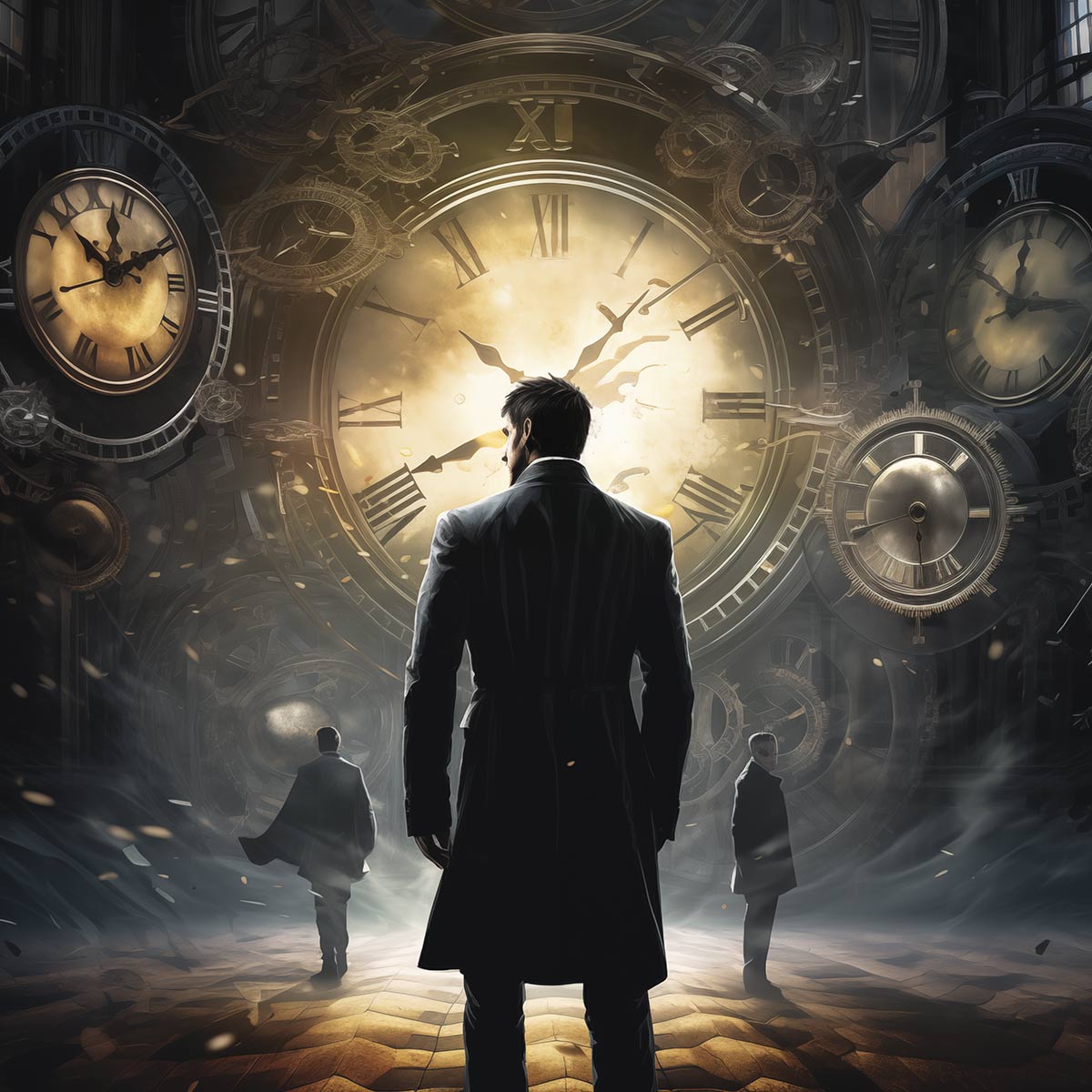
The Time-Traveling Detective Agency: Operating under the radar, a clandestine detective agency specializes in solving cases that transcend time. They receive cryptic requests for assistance from across different historical periods, investigating crimes with connections across centuries. Each case unravels a deeper conspiracy linked to a mysterious figure manipulating events from the shadows, challenging the agency’s resolve and ethical boundaries.
Let us know what you think about our ideas! Comment below to give us your opinion, add onto an existing idea, or submit one of your own!
Related Post

Review: Hugh Howey’s ‘Wool’ Series: A Modern Sci-fi Masterpiece

10 Science Fiction Story Ideas for Space Operas

Awards given for the Best Science Fiction
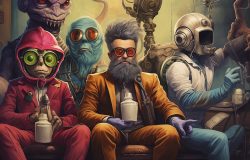
200 Science Fiction Themes to kick off 2024
Recent Posts
- 100 Important Comic Book Terms
- 40 of the best Time Travel novels of the past 40 years
- 10 Best Science Fiction Novels Everyone Should Read
- 140 Alien Story Ideas
- 100 Worldbuilding Tips For Your Next Sci-fi Story
50 Climate Change Science Fiction Story Ideas
30 popular science fiction themes, 30 memory manipulation science fiction story ideas, 10 interviews or speeches from the best science fiction authors of the past 30 years, help support this blog.

If you've enjoyed this blog or used it as a resource in your own creative writing, please feel free to help support the continued efforts of this blog by making a small donation.
You can make a donation by visiting my buymeacoffee.com page. Click Here to donate.
Sciencefictionideas.com is a blog I created as a place to brainstorm and share science fiction ideas, as well as a place to share things I learn in my efforts to become a published author.
I love connecting with fellow writers, so feel free to drop me an email with any feedback, questions, or just to introduce yourself! MORE ABOUT ME
JOIN OUR NEW FACEBOOK GROUP!

Request our Free PDF Guide to Developing Sci-fi Ideas
Most liked ideas/stories.
- The Time Stopper (860)
- 20 Sci-Fi Story Ideas (519)
- The Tiny Aliens and the Forest (369)
- The Android Planet (329)
- 10 Time Travel Science Fiction Ideas (270)
- 25 Science Fiction Short Story Ideas (256)
- A Time Travel Story - Part Four (252)
- The end of earth. (243)
- 4 Space Travel Writing Prompts (231)
- Friday Fright Night - 6 Horror Story Writing Ideas (230)
- 35 Alien Story Ideas (172)
- 9 Horror Story Ideas (171)
- 6 Alien Story Ideas (164)
- A Time Travel Story - Part Two (163)
- 10 Science Fiction Writing Ideas (151)
Sci Fi Ideas Newsletter
Sign up to receive our story ideas, writing prompts, and more!
Your Email (required)
- Aliens (16)
- Androids (8)
- Apocalyptic (8)
- Artificial Inteligence (7)
- Dystopian (1)
- End of Earth (3)
- Eternal Life (1)
- Fantasy Writing Prompts (1)
- Fountain of Youth (1)
- Frozen Planet (2)
- Future Inventions (9)
- Future Story Ideas (13)
- Gift Ideas (15)
- Invisibility (1)
- Life on Mars (3)
- Mad Scientist (2)
- Nanotechnology (5)
- Posters (6)
- Reviews (3)
- Sci Fi Civilizations (16)
- Science Fiction Book Ideas (53)
- Science Fiction News (2)
- Science Fiction Themes (13)
- Science Fiction Weapons (1)
- Short Story Ideas (6)
- Space Racing (1)
- Space Travel (11)
- Spaceships (5)
- Steampunk Stories (1)
- Story Ideas (60)
- Teleportation (1)
- Time Travel Story Ideas (12)
- Uncategorized (45)
- Virtual Reality (5)
- Writing Prompts (23)
- Writing Tips (4)
- Zombies (1)
- February 2024
- January 2024
- December 2023
- January 2023
- December 2022
- November 2022
- February 2021
- February 2020
- January 2020
- January 2019
- December 2018
- November 2018
- October 2018
- August 2018
- August 2016
- September 2015
Stay up to date with our latest posts featuring new science fiction ideas as well as many other sci-fi related topics.
The History Of Time Travel In Science Fiction

As lovers of science fiction, we have all been captivated by the concept of time travel. The idea that we can go back in time and change the course of history, or venture into the future to witness what is yet to come, has enthralled us for centuries. Time travel has become a staple in science fiction literature, television shows and films alike. It is a fascinating subject that explores the intricacies of both human nature and the universe itself.
In this article, we will delve into the history of time travel in science fiction. From its origins to its current state in popular media, we will explore how it has shaped our understanding of the past and future. We will look at some notable examples from film and television, as well as examine common themes and tropes found within these stories. Finally, we will discuss what the future holds for this beloved genre and how it continues to inspire audiences around the world.
The Origins of Time Travel in Science Fiction
Time travel in film, time travel in television, themes and tropes in time travel stories, the future of time travel in science fiction, emerging trends and themes, new technologies and concepts in time travel, frequently asked questions, how does the concept of time travel differ in science fiction compared to other genres, what impact has time travel had on the development of science fiction as a genre, are there any notable examples of time travel stories that have had a significant impact on popular culture, how have advancements in technology influenced the portrayal of time travel in science fiction over time, what ethical considerations come into play when exploring the idea of time travel in science fiction.
The birth of time travel as a concept within the realm of imaginative storytelling can be traced back to some of the earliest works of speculative literature. The evolution of time travel concept in literature dates back to H.G Wells' 'The Time Machine,' published in 1895, which introduced readers to the idea of travelling through time. Since then, writers have been captivated by the possibilities that time travel presents for their stories.
The influence of real-world physics on time travel stories cannot be overstated. The scientific community's understanding and exploration of theoretical physics has influenced how authors approach writing about time travel. From concepts like black holes and wormholes, to theories such as Einstein's theory of relativity, science fiction writers have incorporated these ideas into their stories, creating more complex and scientifically accurate depictions of time travel. This scientific grounding has made it possible for later adaptations in other mediums such as film to create a more realistic portrayal of the concept without losing any sense of wonder or imagination that make these stories so captivating.
As we move into discussing 'time travel in film', it is important to note how this medium has further popularized the concept among audiences worldwide.
You're watching a movie and suddenly you find yourself transported to another era, thanks to the spellbinding magic of time-travel on the big screen. Time travel has been an integral part of science fiction movies since their inception. As technology advanced, filmmakers were able to create alternate realities and paradoxes that kept audiences hooked.
One of the earliest examples of time travel in film is H.G. Wells' 'The Time Machine'. Released in 1960, this classic movie takes us into the distant future where humanity is divided into two classes- one living above ground as predators while the other struggles underground as prey. The movie explores themes like evolution, dystopia, and social inequality through its time-travel narrative. From 'Back to the Future' (1985) to 'Interstellar' (2014), time-travel movies have been entertaining viewers for decades by taking them on wild adventures through different eras and dimensions.
Transitioning into the subsequent section about 'time travel in television', we can see how this genre has expanded beyond just movies onto our screens at home.
Get ready to embark on a thrilling journey through the small screen as television takes us on mind-bending adventures beyond our wildest dreams. TV portrayals of time travel have been just as fascinating, if not more so, than their film counterparts. From popular shows like Doctor Who and Quantum Leap to lesser-known gems like Tru Calling and Timeless, television has given us a plethora of unique and diverse interpretations of time travel.
- Doctor Who: This British sci-fi series follows the adventures of an alien time traveler known only as "The Doctor" who travels through space and time in his TARDIS (Time And Relative Dimension In Space).
- Quantum Leap: In this American cult classic, scientist Sam Beckett becomes trapped in a time-travel experiment gone wrong, leaping into different bodies throughout history in order to correct historical mistakes.
- Timeless: A newer addition to the genre, this American series follows a team of adventurers who use a stolen time machine to prevent criminals from altering key events in history.
These shows have explored everything from alternate timelines and paradoxes to the butterfly effect and predestination. As we delve deeper into themes and tropes in time travel stories, we'll see how these concepts are portrayed across various mediums and what makes them so captivating for audiences.
As if by magic, we'll uncover the recurring themes and storytelling devices that make time-travel stories so irresistible for viewers. One of the most common themes in time travel stories is the issue of paradoxes and their consequences. Time travel can have a ripple effect on events, causing changes in history that can lead to catastrophic outcomes or unexpected consequences. For instance, killing one person in the past could alter an entire timeline leading to disastrous results.
Another popular theme explored in time travel stories is alternate realities and timelines. Time travel often involves altering events from the past which creates a new future reality or timeline. This opens up infinite possibilities for storytelling as each decision made by a character can change everything from minor details to monumental shifts in history. The use of alternate realities also allows writers to explore different versions of characters and see how they would react under different circumstances.
Looking ahead, it's clear that time travel will continue to be an integral component of science fiction storytelling. As technology advances, more concepts related to time manipulation may be introduced into popular culture through movies and television shows - but what form this will take remains uncertain as we move forward into uncharted territory once again!
As we dive into the future of time travel in science fiction, we discover emerging trends and themes that reflect our present-day concerns. One such theme is the ethical implications of meddling with time and its consequences on society. Additionally, new technologies and concepts have arisen that explore time travel beyond simply going back to change the past or peeking into the future. It's an exciting time for science fiction writers as they continue to push the boundaries of what's possible in this genre.
You're probably feeling excited to see the fresh ideas and patterns that are popping up in this section. As science fiction continues to evolve, so do the emerging trends and themes in time travel. One of these trends is the exploration of alternate realities, where characters can travel to different dimensions and timelines. This allows for endless possibilities and opens up new avenues for storytelling. Another popular theme is the use of paradoxes, where characters must navigate through complex timelines and alter their actions to avoid catastrophic consequences.
As these emerging trends continue to develop, it's clear that time travel remains a fascinating topic in science fiction. From exploring alternate realities to navigating through paradoxes, writers are constantly pushing boundaries and creating unique stories that captivate audiences. With new technologies and concepts on the horizon, we can only imagine what exciting twists and turns await us in the future of time travel storytelling.
As we have seen, emerging trends and themes in time travel stories have always been impacted by the cultural and scientific zeitgeist of their era. From the 80s to the early 2000s , a key factor that has shaped this genre has been new technologies and concepts in time travel. With advances in quantum mechanics, writers have had to grapple with new theories about paradoxes and alternate realities.
Quantum mechanics offers fascinating possibilities for time travel stories as it allows for multiple timelines and parallel universes. In some stories, characters can change one event in the past only to return to a present that is completely different from what they remember. This opens up new creative avenues for exploring how small changes can lead to entirely different outcomes. However, it also raises challenging questions around free will and determinism - if there are infinite versions of reality, then do our choices even matter? These questions continue to inspire writers today as they craft intricate narratives that play with the concept of alternate realities and timelines.
As avid consumers of science fiction, we've come to appreciate the unique way that time travel is portrayed in this genre. What sets it apart from other genres is its exploration of paradoxes and consequences that arise when one tampers with the timeline. Science fiction also often delves into the concept of multiverse and alternate realities, where different versions of ourselves exist simultaneously in parallel universes. These themes add layers of complexity to time travel stories, making them more than just a simple journey through time. By examining these ideas, we can gain a deeper understanding of how science fiction tackles the intricacies of time travel and its implications on our lives.
Exploring the paradoxes and philosophical implications of time travel has had a significant impact on the development of science fiction as a genre. These themes have forced writers to grapple with complex ideas about causality, morality, and the nature of reality itself. By using time travel as a plot device, science fiction has been able to explore these topics in ways that would be impossible through any other means. The resulting stories are often thought-provoking, challenging readers to consider their own beliefs about the universe and our place within it. As such, time travel has played an important role in shaping science fiction into the intellectually stimulating and endlessly fascinating genre that it is today.
As the saying goes, "time waits for no one," but time travel stories have captured our imaginations for decades. Some of the most notable examples include 'Back to the Future' and 'The Butterfly Effect,' which have had a significant impact on popular culture. These stories explore the consequences of altering events in history and present, highlighting the ripple effects that even small changes can create. Through these tales, we're forced to contemplate the fragility of time and how our actions can have far-reaching consequences. Whether it's Marty McFly racing through different timelines or Evan Treborn grappling with his ability to alter his past, these stories continue to captivate audiences with their imaginative take on time travel.
Advancements in technology have greatly influenced the portrayal of time travel in science fiction over time. With the rise of Multiverse theory, time travel stories have become more complex and intricate, exploring the idea that every decision made creates a new universe. Paradoxes, once a common trope in time travel stories, have now been challenged by theories that suggest they may not occur at all. Technology has allowed for filmmakers to visually depict these concepts in ways never before possible, making for truly mind-bending narratives that challenge our understanding of reality itself. As such, modern science fiction offers us an exciting glimpse into what could be possible if we were able to manipulate time and space as easily as we do our daily routines.
As we delve into the concept of time travel in science fiction, it's impossible to ignore the paradoxical consequences and moral implications that come with exploring this idea. The mere thought of going back in time or altering events can have a ripple effect on the future, leading to unforeseen and potentially catastrophic outcomes. Additionally, the question of whether it's morally right to interfere with past events for personal gain raises important ethical considerations. It's crucial for writers to address these issues when creating stories centered around time travel, as they not only add depth but also encourage readers to think critically about their own beliefs and values regarding such a complex topic.
In conclusion, the history of time travel in science fiction has been a fascinating journey through the imaginations of some of the greatest minds in literature and entertainment. From H.G. Wells' "The Time Machine" to Christopher Nolan's "Interstellar," writers and filmmakers have explored the possibilities and consequences of traveling through time.
While some stories focus on the technical aspects of time travel, others use it as a tool to explore deeper themes such as redemption, regret, and fate. One example is the film "About Time," which uses time travel to examine the importance of living in the present moment and cherishing our relationships with loved ones.
As technology advances and our understanding of physics deepens, it is likely that we will see even more creative interpretations of time travel in science fiction. Whether it's through books, films, or television shows, these stories continue to captivate audiences by challenging our perceptions of reality and reminding us that anything is possible in this vast universe we inhabit.
- Skip to main content
- Skip to primary sidebar

Writing Tips Oasis - A website dedicated to helping writers to write and publish books.
How to Write Time Travel Romance
By Georgina Roy

Are you wondering how to write time travel romance? Do you need some assistance? We’ve included 8 tips below to help you write a novel in this subgenre of romance.
1. Must have time travel
A time travel romance is a specific niche in the romance genre that, in addition to romance, blends elements of science fiction, fantasy, and/or historical fiction, depending on the method of time travel and the time period characters get to visit respectively.
As such, time traveling is the essential part that is the cause of all of the events in the novel. At least one of the protagonists has to time travel for the novel to happen, because it usually involves two people from different time periods falling in love.
However, it is worth noting that both the romantic heroine and the hero can time travel to a different era, and also, the character who time travels may or may not be accompanied on the journey by other major side characters (who would get to have their own adventures in the other time period too).
2. Understand the different methods and types of time traveling
The method of time traveling can be scientific in nature with the protagonist and/or other time traveling characters using a machine to do so or being in the proximity of a scientist who is devising such a machine. Time travel can also be magical in nature, with magical creatures sending a person to the past through their magic. Or, as is the case with the novel The Time Traveler’s Wife by Audrey Niffenegger, the time traveling hero is born with a disorder that causes him to unwillingly time travel to different periods of his own life.
When it comes to time traveling types, there are two of them: closed loop time travel, and changing timelines time travel.
The closed loop time traveling is where everything that happened in the past has already happened, even if the protagonist is experiencing it for the first time from their own perspective, and nothing can be changed – even if the protagonist tries to do so. For example, perhaps a woman visits an old crumbling mansion and sees a painting that looks quite like herself, down to the beauty mark on her chin. As the novel progresses, she travels back into the past, where she and the lord of the manor fall in love and he commissions an artist to paint her.
The changing timelines time travel is where a character goes back in time, and if they make a change, they travel back to a present that has been changed (usually for the worse), and then they have to go back to set things right. This type of time travel is a lot more complicated, because you need to ensure that the ensuing change to the timeline does not cause the original time traveling character never traveling back in time in the first place – which can cause an inconsistency and a major plot hole in the story.

3. Choose the time periods of time travel
You can have four different time periods of time traveling. The first one is a character from the present traveling to a certain time period of the past. This is where the historical fiction elements come into play, because you need to treat that part of the novel as historical fiction and try to be as accurate as possible in the descriptions of the time period.
The second time period is a person from the future traveling to the present day. Such time travel rarely happens by magic (although it is possible), and borrows elements from science fiction (specifically speculative futuristic science fiction) to depict the future time period the character is traveling to.
The third time period is the character from the near or far future traveling to a time period of the past. Here, you will have to blend both historical fiction and science fiction and you will need to depict both a futuristic setting and a setting in the past.
Finally, you have a character from the past traveling to the future (from their perspective), which can either be the current present time period or a futuristic one. As with the third time period, this one also blends historical fiction and science fiction in the depiction of the settings.
4. Make the setting believable
When a character time travels to a time period from the past, you will need to do a lot of research of the time period, everything from historical events to the people’s general way of life, to be able to depict the setting appropriately and make it believable. The time traveling character has to react to the differences between their own time (the present or a future time period) and the setting in the past. Additionally, the other characters should react to the time traveling character and how different they are in comparison to the people of said time period.
When there are future time periods involved, the more time you spend in that time period, the more it should be developed. You need to have a timeline of a future history, i.e. determine what has happened from our present to the time period the character is traveling to or from, in terms of major world events and the people’s way of life.
Most importantly, characters need to react to what is to them a new time period. A character traveling from the past to the future will not know what a smartphone is or how to use it. A character traveling from a highly developed futuristic time period to the Middle Ages will have a difficult time adjusting to using the medieval version of a toilet. A higher number of years (decades, centuries, or millennia) between the time period a person comes from to the one they are traveling to, means that there should be a higher level of exacerbated reaction to the people’s way of life.
5. The main plot is still romance
If the romance happens along the sidelines (as a subplot) then you are writing a time traveling novel with romantic elements. For a time traveling romance, the main plot that is driving the story needs to be the romance. This means that the hero and heroine need to meet and fall in love, and all of the events of the novel will depend on that driving force.
Maybe it is the hero who time travels to the past, meets a lovely girl, and falls in love with her. Maybe it is the heroine who travels to the past and meets the hero who is from that time period. Rarely, both the hero and heroine travel to the past from the same (or different) time periods and fall in love in the time period of the past.
Regardless of which path you choose as to which character gets to time travel or not, the main plot still needs to focus on the romance. This means that the hero and heroine will meet, fall in love, try to be together (made especially more complicated if the time traveling occurs several times in the course of the novel with the hero and heroine trying to make it work despite the fact that they come and live in different time periods), then conflict should arise between them, followed by a separation at the climax, and a reunion at the end of the novel.
6. Ensure the presence of conflicting values
As previously mentioned, nominally, in a time travel romance, the hero and heroine will come from different time periods. This means that they will have grown up under vastly different circumstances and ways of life. They will uphold different values, and often, these values will come in conflict.
That kind of conflict can and should be a main reason for the conflict both between them, and as the inner conflict each one of them has to face. In other words, although they have fallen in love, for their relationship to actually work, each one of them will need to rethink their principles and values in order to adapt to the other person and be able to be together.
If both the hero and heroine come from the same time period and travel to the past, then their reaction to the past is what will drive the conflict between them. In other words, one of them might view the past positively and romanticize it, while the other might actively dislike it and want to go back to their own time period.
7. Give the characters a choice
In any time traveling story, there is always the need for the choice: will the time traveling character stay in the time period they traveled to, or will they go back to whence they came from?
When it comes to time travel romance, presenting the characters with such a choice is a must – especially if staying in the past for one character might mean changing the future so much that they prevent themselves from traveling to the past in the first place. A closed loop time travel does take care of that problem, and if the character remains in the past, it is because that was always their fate.
The presence of the need to make such a choice is also what the romance hinges on, as well as the ending of the novel, and whether the hero and heroine stay together or separate at the end.
8. Choose the type of ending
Traditional romantic novels nearly always have either a happily ever after ending, where the hero and heroine stay together and become committed for good, usually with a wedding, or a happy for now ending, where the hero and heroine decide to start dating without committing to each other long term. In a time traveling romance, where the hero and heroine stay together at the end (usually in the era the time traveling character traveled to), they end on a happily ever after note (rather than a happy for now).
When it comes to time traveling romance, due to the fact that the hero and heroine usually come from different eras, the ending might be that while they are emotionally committed to each other, they cannot stay together because the time traveling character needs to go back to their own time.
A happy ending (of either of the two types described above) does not necessarily have to be how the novel ends. In cases where the time traveling character decides to go back to their own time, they go back changed for the better by the experience, in the sense of how it is better to have loved and lost than to never have loved at all.

Where Does the Concept of Time Travel Come From?
Time; he's waiting in the wings.

The dream of traveling through time is both ancient and universal. But where did humanity's fascination with time travel begin, and why is the idea so appealing?
The concept of time travel — moving through time the way we move through three-dimensional space — may in fact be hardwired into our perception of time . Linguists have recognized that we are essentially incapable of talking about temporal matters without referencing spatial ones. "In language — any language — no two domains are more intimately linked than space and time," wrote Israeli linguist Guy Deutscher in his 2005 book "The Unfolding of Language." "Even if we are not always aware of it, we invariably speak of time in terms of space, and this reflects the fact that we think of time in terms of space."
Deutscher reminds us that when we plan to meet a friend "around" lunchtime, we are using a metaphor, since lunchtime doesn't have any physical sides. He similarly points out that time can not literally be "long" or "short" like a stick, nor "pass" like a train, or even go "forward" or "backward" any more than it goes sideways, diagonal or down.
Related: Why Does Time Fly When You're Having Fun?
Perhaps because of this connection between space and time, the possibility that time can be experienced in different ways and traveled through has surprisingly early roots. One of the first known examples of time travel appears in the Mahabharata, an ancient Sanskrit epic poem compiled around 400 B.C., Lisa Yaszek, a professor of science fiction studies at the Georgia Institute of Technology in Atlanta, told Live Science
In the Mahabharata is a story about King Kakudmi, who lived millions of years ago and sought a suitable husband for his beautiful and accomplished daughter, Revati. The two travel to the home of the creator god Brahma to ask for advice. But while in Brahma's plane of existence, they must wait as the god listens to a 20-minute song, after which Brahma explains that time moves differently in the heavens than on Earth. It turned out that "27 chatur-yugas" had passed, or more than 116 million years, according to an online summary , and so everyone Kakudmi and Revati had ever known, including family members and potential suitors, was dead. After this shock, the story closes on a somewhat happy ending in that Revati is betrothed to Balarama, twin brother of the deity Krishna.
Time is fleeting
To Yaszek, the tale provides an example of what we now call time dilation , in which different observers measure different lengths of time based on their relative frames of reference, a part of Einstein's theory of relativity.
Sign up for the Live Science daily newsletter now
Get the world’s most fascinating discoveries delivered straight to your inbox.
Such time-slip stories are widespread throughout the world, Yaszek said, citing a Middle Eastern tale from the first century BCE about a Jewish miracle worker who sleeps beneath a newly-planted carob tree and wakes up 70 years later to find it has now matured and borne fruit (carob trees are notorious for how long they take to produce their first harvest). Another instance can be found in an eighth-century Japanese fable about a fisherman named Urashima Tarō who travels to an undersea palace and falls in love with a princess. Tarō finds that, when he returns home, 100 years have passed, according to a translation of the tale published online by the University of South Florida .
In the early-modern era of the 1700 and 1800s, the sleep-story version of time travel grew more popular, Yaszek said. Examples include the classic tale of Rip Van Winkle, as well as books like Edward Belamy's utopian 1888 novel "Looking Backwards," in which a man wakes up in the year 2000, and the H.G. Wells 1899 novel "The Sleeper Awakes," about a man who slumbers for centuries and wakes to a completely transformed London.
Related: Science Fiction or Fact: Is Time Travel Possible ?
In other stories from this period, people also start to be able to move backward in time. In Mark Twain’s 1889 satire "A Connecticut Yankee in King Arthur's Court," a blow to the head propels an engineer back to the reign of the legendary British monarch. Objects that can send someone through time begin to appear as well, mainly clocks, such as in Edward Page Mitchell's 1881 story "The Clock that Went Backwards" or Lewis Carrol's 1889 children's fantasy "Sylvie and Bruno," where the characters possess a watch that is a type of time machine .
The explosion of such stories during this era might come from the fact that people were "beginning to standardize time, and orient themselves to clocks more frequently," Yaszek said.
Time after time
Wells provided one of the most enduring time-travel plots in his 1895 novella "The Time Machine," which included the innovation of a craft that can move forward and backward through long spans of time. "This is when we’re getting steam engines and trains and the first automobiles," Yaszek said. "I think it’s no surprise that Wells suddenly thinks: 'Hey, maybe we can use a vehicle to travel through time.'"
Because it is such a rich visual icon, many beloved time-travel stories written after this have included a striking time machine, Yaszek said, referencing The Doctor's blue police box — the TARDIS — in the long-running BBC series "Doctor Who," and "Back to the Future"'s silver luxury speedster, the DeLorean .
More recently, time travel has been used to examine our relationship with the past, Yaszek said, in particular in pieces written by women and people of color. Octavia Butler's 1979 novel "Kindred" about a modern woman who visits her pre-Civil-War ancestors is "a marvelous story that really asks us to rethink black and white relations through history," she said. And a contemporary web series called " Send Me " involves an African-American psychic who can guide people back to antebellum times and witness slavery.
"I'm really excited about stories like that," Yaszek said. "They help us re-see history from new perspectives."
Time travel has found a home in a wide variety of genres and media, including comedies such as "Groundhog Day" and "Bill and Ted's Excellent Adventure" as well as video games like Nintendo's "The Legend of Zelda: Majora's Mask" and the indie game "Braid."
Yaszek suggested that this malleability and ubiquity speaks to time travel tales' ability to offer an escape from our normal reality. "They let us imagine that we can break free from the grip of linear time," she said. "And somehow get a new perspective on the human experience, either our own or humanity as a whole, and I think that feels so exciting to us."
That modern people are often drawn to time-machine stories in particular might reflect the fact that we live in a technological world, she added. Yet time travel's appeal certainly has deeper roots, interwoven into the very fabric of our language and appearing in some of our earliest imaginings.
"I think it's a way to make sense of the otherwise intangible and inexplicable, because it's hard to grasp time," Yaszek said. "But this is one of the final frontiers, the frontier of time, of life and death. And we're all moving forward, we're all traveling through time."
- If There Were a Time Warp, How Would Physicists Find It?
- Can Animals Tell Time?
- Why Does Time Sometimes Fly When You're NOT Having Fun?
Originally published on Live Science .

Adam Mann is a freelance journalist with over a decade of experience, specializing in astronomy and physics stories. He has a bachelor's degree in astrophysics from UC Berkeley. His work has appeared in the New Yorker, New York Times, National Geographic, Wall Street Journal, Wired, Nature, Science, and many other places. He lives in Oakland, California, where he enjoys riding his bike.
Why do people feel like they're being watched, even when no one is there?
Why do babies rub their eyes when they're tired?
'Frankenstein' mice with brain cells from rats raised in the lab
Most Popular
- 2 James Webb telescope confirms there is something seriously wrong with our understanding of the universe
- 3 DNA analysis spanning 9 generations of people reveals marriage practices of mysterious warrior culture
- 4 Tweak to Schrödinger's cat equation could unite Einstein's relativity and quantum mechanics, study hints
- 5 2 plants randomly mated up to 1 million years ago to give rise to one of the world's most popular drinks
- 2 2 plants randomly mated up to 1 million years ago to give rise to one of the world's most popular drinks
- 3 Tweak to Schrödinger's cat equation could unite Einstein's relativity and quantum mechanics, study hints
- 4 'We were in disbelief': Antarctica is behaving in a way we've never seen before. Can it recover?
- 5 Hundreds of black 'spiders' spotted in mysterious 'Inca City' on Mars in new satellite photos
Latest Stories
- more Entertainment Worth Health IPL 2024 Women's Day 2024
7 'Real' Accounts Of Time-Travel That'll Leave You Questioning Everything
Of all things unknown in this world, time travel has to be the one that fascinates me the most. Sure, one needs to be a believer of some kind to take any of this seriously, but some of the stories you're about to read in the article will really get you thinking, and ask questions nobody has the answers to. Is time travel for real? These people definitely seem to believe so.
P.S- All this makes for a fascinating read, but before believing any of it, do know that until the time it is proven by science, all this remains nothing more than conjecture.
1. When Air-Marshal Sir Victor Goddard accidentally entered a parallel universe.

1.bp.blogspot.com
In his book on the subject, Time Travel: A New Perspective , J. H. Brennan talks about an 'accidental' time travel story that'll definitely stay with you for some time to come. According to the writer, Air-Marshal Sir Victor Goddard flew into a parallel universe by mistake. Back in 1935, when he was still a Wing Commander, Sir Goddard was instructed to inspect an inactive airbase located in Drem, near Edinburg in Scotland. While flying over it, Sir Goddard found the airbase to be in a poor state with cattle grazing on the wild grass that had now forced its way through the tarmac. It was in complete shambles. Later on, while flying his biplane, he got into a bit of trouble thanks to the harsh weather conditions. To avoid an accident, Sir Goddard decided to fly back to the airbase till the weather cleared out a bit. As he approached the airbase, the torrential rain oddly and very abruptly gave way to bright sunshine. If that wasn't odd enough, he also noticed that the airbase was in mint condition and in use! He even spotted mechanics wearing blue overalls working on the yellow planes parked on the runway. The planes weren't the ones in use by the air force back then. In fact, Sir Goddard even failed to recognise one of them. Funny because instant renovation of the place couldn't have been possible, and more importantly, these guys weren't even wearing the khaki coloured uniforms that were a norm then. Also, the Air Force painted all their planes in silver, not yellow.
Completely baffled by what the hell was going on, Goddard got the shock of his life four years after. Europe was war torn and he happened to visit Drem again. But this time, he saw everything he saw four years back in 1935. Same, people in blue overalls servicing yellow planes. Full deja-vu moment. He even found the plane he couldn't recognise before - a Miles Magister. Did Sir Goddard fly four years into the future? Sceptics say that Goddard might have simply been confused about his location. But that's too simple an explanation. Also, could an acclaimed officer like him make such an elementary mistake? Sir Goddard passed away in 1987 so I guess we'll never have an answer.
2. L.C's drive back in the past

Back in 1988, Strange Magazine 2 published an article written by Ken Meaux titled "Time Traveler". The article was about the shocking account of a man who would go by the name L.C. Back in 1969, L.C and his business associate, Bob (fake name) were driving along highway 167 towards the Oil Center city of Lafayette after finishing lunch in the Southwest Louisiana town of Abbeville, United States. It was the 20th of October around 1:30 PM in the afternoon. The day was perfect with a blue sky and cool breeze. Up ahead, they spotted an old turtle back auto going really slow. They were intrigued by the vehicle - it wasn't something either of them had seen before. Very unique, and definitely antique. But here's the thing. Even though the vehicle looked like a blast from the past, it was in mint condition. The two overtook the vehicle, but not before slowing down right next it to check it out in detail. The car had a very distinct large, bright orange license plate with the year "1940" clearly printed on it, which was quite odd because antique cars like the one in question weren't allowed to be driven on the road unless it was being used for a ceremonial parade. Things just got weirder from there. The person driving the car was a young woman dressed in what appeared to be a "vintage" dress from the 40s complete with a hat and a fur coat. There was a small child as well, dressed in a heavy coat and a cap. As they pulled up next to the car, the lady started panicking. One could make out her face going pale with fear. She frantically started looking back and forth as if she was in the middle of somewhere unknown. As if she really needed some help, she was almost about to cry. L.C asked her if she needed any help, to which she responded in the affirmative. But at no point did she roll down the window or even look him in the eye. After requesting her several times to halt the vehicle, they finally saw her pull over on the side of the road. L.C and Bob passed her and pulled over in front of her. But as soon as they looked behind, the vehicle was gone. Poof! Vanished into thin air. This was a highway without any traffic so disappearing like this was quite impossible.
Shocked and not knowing how to describe what had just happened, L.C and Bob decided to keep driving on. A little while later, while they were still on Highway 167, they saw another new car pass a very old car at a really slow speed. It was apparently so slow that it looked like the cars had come to a halt. As soon as the new car pulled over in front of the car, the same thing happened. It stopped and then suddenly disappeared. They couldn't believe their eyes. Even the guy in the other car was completely shocked. The three started describing what each had seen. They started walking around the area. The third guy insisted they should be reporting this to the police, as this, according to him, was a missing person case. L.C and Bob refused, more so because they had no idea where the woman and the child along with the car, had vanished. The third man couldn't go to the cops without these two, everyone would think this guy was mad. But he exchanged phone numbers and addresses and kept talking about the incident with them just to make sure he didn't lose his mind. Could she have been a time traveller from the past who went forward in time? Or could she have been a person from the past who could never go back, stuck in limbo? One can never tell with certainty.
3. The news broke 11 years before it actually happened.
2.bp.blogspot.com
News agencies would kill for a story eleven years ahead of its time. But honestly, if this were to happen with me, I'd totally lose my marbles. This spine-chilling story was a part of the book The Little Giant Book of Eerie Thrills and Unspeakable Chills written by Ron Edwards, C. B. Colby, John Macklin. According to the authors, back in 1932, newspaper reporter J.Bernard Hutton and photographer Joachim Brandt were sent to do a feature story on the Hamburg shipyard in Germany. After completing their assignment, just as they were about to leave the premises, they heard the sound of aircraft engines only to look up and see the sky full of fighter planes. The anti-aircraft batteries opened fire and bombs started going off. All of a sudden, this place had become a war zone. Things were exploding, buildings were collapsing, there was death and chaos everywhere. Before rushing out to save their lives, Hutton even asked a security guard if there was something they could do to help out, but was asked to immediately leave the area instead. As the two drove into Hamburg, things changed. The sky cleared up and everything was back to being normal. There was no blood or violence, buildings were fine. No one seemed to panic. It was as if nothing had happened. When Hutton and Brandt looked behind towards the shipyard, they couldn't spot anything wrong with it. No damage, no smoke come from the buildings. Shocking. The newspaper office obviously did not believe the two. Even the pictures that Brandt had been taking during the attack showed everything to be normal. The shipyard looked as good as new. Their colleagues dismissed their claim by deciding that they must've stopped on their way for a drink and it was the alcohol making them see things.
Bernard Hutton later moved to London just before the second World War began. In 1943, what he read in a newspaper one morning almost made his heart stop. It was a story about a successful raid by a Roy Air Force squadron on the Hamburg shipyard. The resemblance was uncanny. This was an exact representation of what he and Brandt witnessed 11 years back. How?
4. The man who met himself
On the 30th of August in 2006, 36-year-old Håkan Nordkvist came back home to find his kitchen flooded with water. Thinking it's nothing more than a leak, he crawled under the sink to fix the problem. But when he crawled inside the cabinet, he noticed that it just continued. So he kept crawling further until he stopped right at the end of the tunnel. When he got out, Nordkvist realised that he had landed up in the future, in 2042 in fact. And oddly enough, he even met himself in the future, an old 72-year-old self. Future Noirdkvist wasn't very surprised to meet this guy. Over and above, he even told him things that only he could've known. They even had the same tattoo. Of course, the future guy's tattoo was a little more faded. They even took a selfie together. Hmm, interesting. Although honestly, this one sounds more like an acid trip, but who are we to judge, right?
5. The time travelling hipster
YouTube/zootman525
Look at this photograph very carefully. Find something wrong with it? This picture was found on the Virtual Museum of Canada website and dates all the way back to 1941. The picture is said to be the reopening of the South Fork Bridge in the early 40s in Gold Bridge, B.C, Canada. While it is a completely normal photograph, one cannot help but notice this gentleman in hipster clothes. He doesn't really look like a 'part of the crew' here, does he? Could he have been travelling back in time?
6. The man who travelled back in time to become a Wall Street scam artist.
On 28th of January, 2003, a certain Andrew Carlssin was arrested and detained by the police for insider trading at the Wall Street. It's insane really. Over a two-week period in the stock market, Andrew went from having $800 to making, wait for this, $350 million. It's like whatever he invested in turned into gold. It is nearly impossible to make the kind of profits he did. He was arrested by the cops on the allegation that he must have had illegal insider information. But when asked why and how he did this, the cops weren't really expecting what Andrew had to say. He claimed to be a man from the year 2256. Since he was from the future, he knew exactly how the stocks were going to perform. Obviously, the cops thought this guy was chatting utter rubbish. But get this, soon after he was released on bail, the man disappeared from the face of this Earth and even after repeated attempts, he couldn't be found. Was he telling the truth? Who knows, but get this - Carlssin predicted the exact date of the US invasion of Iraq.
7. The man from Taured.
This one is a really strange account which remains unanswered. The story goes like this -
On a hot afternoon in July 1954, a man arrived at the Haneda airport, also known as the Tokyo International Airport. Described to be a Caucasian man with a beard, this man is known to have been French but he was pretty fluent in other languages as well, including Japanese. Now, there are a couple of versions to the story. Some say that the man handed over his passport to be stamped by the Japanese immigration officials when the officers realised that while the passport seemed perfectly fine, the country where it was issued - "Taured" - did not exist in real life!
In another version, the man mentioned that he was from Taured, and when the officers didn't believe him, he showed his passport. Either way, the man tried his best to convince the officers that Taured, does, in fact, exist in real life. He claimed that it was located in between France and Spain. He claimed that his hometown wasn't new either and said it had been around for the last 1000 years! Eventually, when the man was shown a world map, he pointed to the area which is currently the principality of Andorra. He genuinely seemed confused as to why the authorities were hell bent on calling this place Andorra. Eventually, the immigration officers arrested the man on suspicions of being a criminal. To interrogate him further and figure what in god's name was going on, he was shifted to a hotel nearby. Two guards were positioned outside his room. But guess what happened when they went to check on the man the next day? Poof! Vanished. There were no signs of his escape. Even the documents he was carrying with him which could've been used as evidence of this man's existence, disappeared as well. Could he have been a man from the future? Or more interestingly, could he be living in a parallel universe where Andorra is known as Taured? More logically, all this could also be the work of a talented story teller. Unfortunately, there's no way to tell.
Football, films and food are the three words to describe Rishabh. A complete movie and sitcom buff, he can spend days in front of the television watching his favourite films, TV shows and the greatest football team in the world - Chelsea. He doesn't believe in getting out of bed unless he absolutely has to. Much like his face, he likes to write on everything funny, obscure, and nonsensical the world has to offer. He believes travelling is the best way to learn anything, and can happily play FIFA all night long. A creature of the night, Rishabh is also a firm believer that the solution to all life’s problems is Batman
Visual Stories

10 Powerful Quotes By Steve Jobs On Success

8 Best Smartwatches With Great Deals And Offers
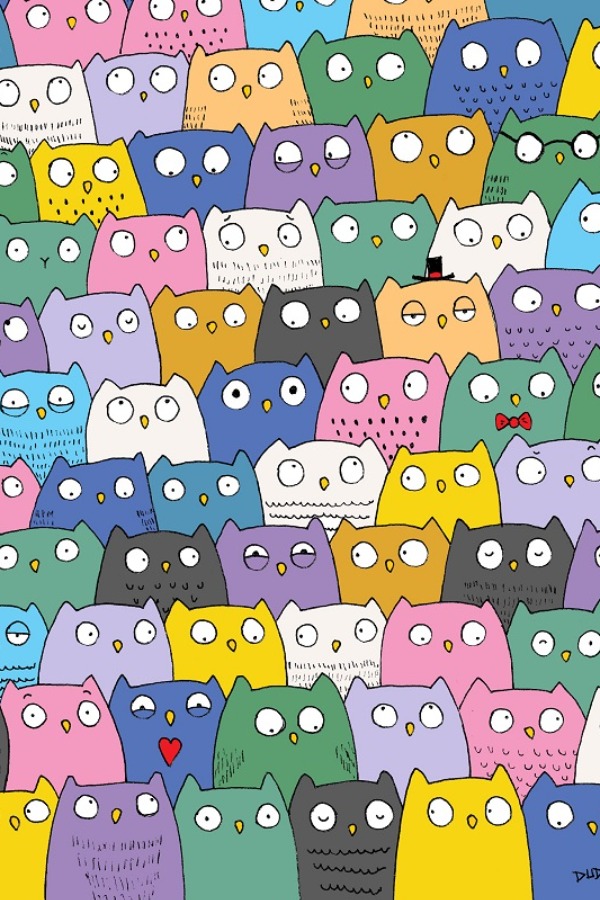
Optical Illusion: Find The Cat Among The Owls In 7 Seconds

Sonakshi Sinha To Manisha Koirala, Here's The Fee Of Heeramandi Cast
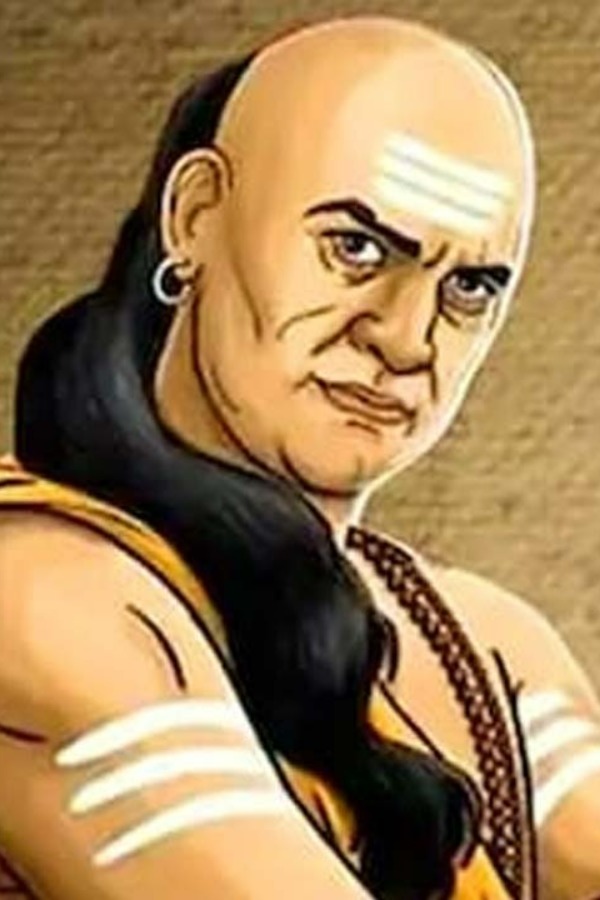
Chanakya Niti: 10 Chanakya’s Teachings On Leadership

Best High Salary Courses After 10th: Top Picks For 2024

Find The Designer's Missing Sewing Machine In 7 Seconds

Mahindra XUV 3XO Launched: Check Price, Variants, Mileage And More
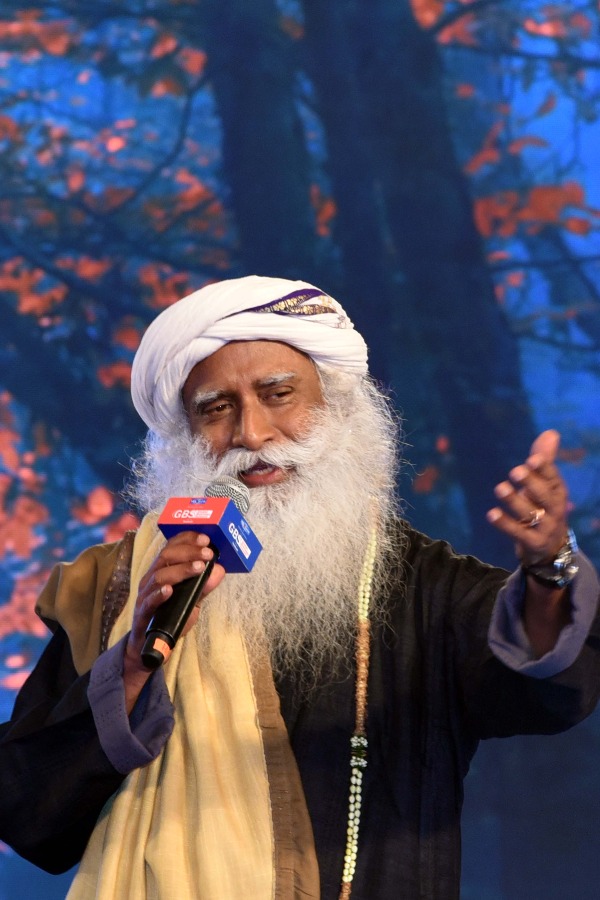
10 Sadhguru Quotes On Love & Life
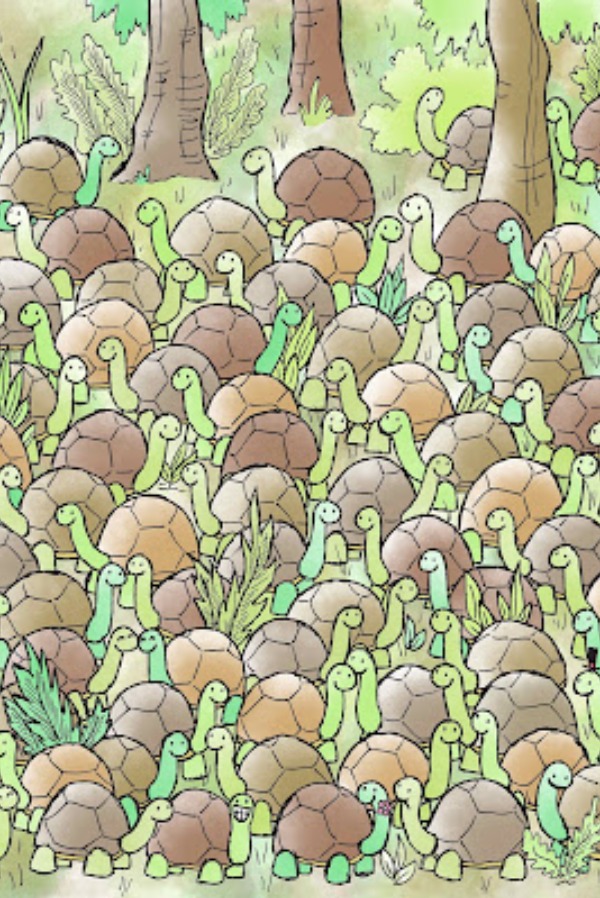
Optical Illusion: Find The Snake Among The Tortoises In 11 Seconds

Accept the updated Privacy & Cookie Policy
The Quirk E. Newsletter
We promise to send you only the coolest stuff we have to offer every month, like information on new releases, preorder campaigns, giveaways, and discounts. Right now, you only need 3 referrals to get a free e-book!
Or subscribe and set genre preferences
By clicking subscribe, I acknowledge that I have read and agree to Quirk Books’ Privacy Policy and Terms of Use . This site is protected by reCAPTCHA and the Google Privacy Policy and Terms of Service apply.
Classic Time Travel Paradoxes (And How To Avoid Them)
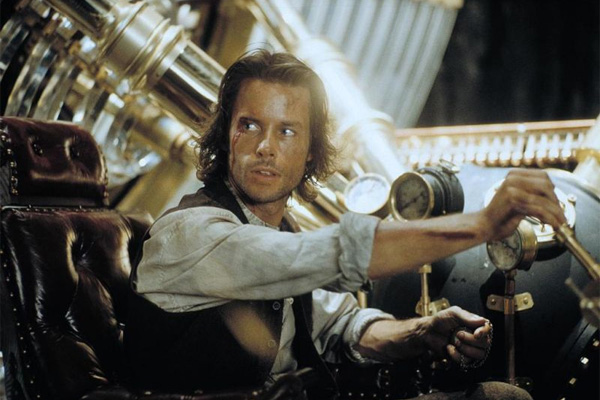
[Movie still from Time Machine , Warner Bros. and Dreamworks]
Editor's Note: We're bringing back one of our most loved posts because hey, time travel is always a relevant topic of discussion. Originally published 11/30/12.
Author's Note: I assume that some day, this article will serve as an invaluable guide and warning for our time traveling ancestors-to-be (who will of course be unable to read books and learn these lessons for themselves, either because [a] all the books will have been burned, or [b] kids will have stopped reading books entirely, because grumble grumble, god damn kids, when I was your age, video games, blah blah, detriment to society, buncha hooligans, kids these days, no respect, etc). In the meantime, just enjoy it for all of its delightfully entertaining/convoluted/paradoxical pleasures.
As anyone who’s anyone who’s read any time travel story ever could easily tell you, time travel is a tricky subject. Temporal paradoxes might seem simple and straightforward at the start (no they don’t), but they always devolve quite quickly (linear time-wise) into some sort of trippy, philosophically complicated, timey-wimey conundrum that makes even the most convoluted middle school relationship make sense by comparison. Come to think of it, maybe the reason that all those cool kids in middle school suffer from impossibly complicated and melodramatic romances to begin with is because they’re all too “cool” to read time travel stories in the first place, which would obviously teach them the benefits of temporally linear dating, if nothing else.
I’m looking at you, River Song.
For the most part, any paradox related to time travel can generally be resolved or avoided by the Novikov self-consistency principle, which essentially asserts that for any scenario in which a paradox might arise, the probability of that event actually occurring is zero — or, to quote from LOST, “whatever happened, happened,” meaning that no matter what anyone does, they can’t actually create a paradox, because the laws of quantum physics will self-correct to avoid such a situation. Still, I’m wary of such a loose explanation for things, and so below, I’ve compiled a list of a few of the more popular time travel paradoxes — and what to do to avoid them.

ONTOLOGICAL PARADOX : Also known as the “Bootstraps Paradox,” an ontological paradox arises when a person or object is sent through time and recovered by another person, whose actions then lead to the original person or object back to the time from when it came in the first place, thus creating an endless loop with no discernible point of origin. Thus, the original person or object is essentially “pulling itself up by its own bootstraps,” hence the nickname (thanks in no small part to the Robert Heinlein story “By His Bootstraps”).
Example : The Terminator films are a prime and popular example of the Ontological Paradox. In the future, a Terminator is sent back in time to kill the mother of resistance leader John Connor before he is born. While the original T-800 is ultimately destroyed, the leftover pieces are found by scientists who use the technological to…develop and create Skynet, and the Terminator-series robots. Skynet would have never been created if Skynet hadn’t taken over the world and then sent a Terminator back in time to get destroyed and ultimately lead to the creation of Skynet. Trippy, right?
There's also the fact that Future John Connor sends his buddy Kyle Reese back in time to protect his mother from the T-800, only Kyle ends up totally bangin' John's mom (dude high five! I mean, not cool, man) and impregnates her with his buddy John Connor. So to top it all off, if John hadn't sent his friend back in time, his friend would never have had sex with John's mom, and John would never have been born (meaning that Kyle Reese is either the best or worst friend, ever).
How to Avoid : No one’s really sure if a real-life ontological paradox would lead to some massive hemorrhaging of spacetime, or if the closed loop is kind of automatically self-corrected since it all works itself out evenly in the end anyway. Still, better to avoid these kind of complicated situations, and the best way to do that would simply be to stop taking candy from strangers — “candy” in this case being mysterious or alien artifacts with questionable origins, possibly given to you by mysterious people who may or may not come from the future. See? Maybe all those warnings that your Mom gave you when you were a little kid still mean something today. Or maybe all along she was just trying to prevent you from sending your friends back in time to sleep with her. Or perhaps encourage it…

PREDESTINATION PARADOX : The predestination paradox is similar to the ontological paradox in that the Cause leads to an Effect which then leads back to the initial Cause. The basic tenant of the predestination paradox is similar to that of a self-fulfilling prophecy: the motivation for the time traveler to travel in time is ultimately realized to have been the time traveler’s fault, due to his or her decision to time travel in the first place, or else otherwise unavoidable. Stories involving predestination paradoxes often involve a heavy sense of irony — the time traveler might go back in time in order to change something, for example, but his or her actions inadvertently lead to the exact situation that inspired the time traveler to have gone back and changed things. Thus, nothing ultimately changes. Determinism is a bleak friend.
Example : In Twelve Monkeys, James Cole is sent back in time to prevent a mysterious disaster involving the “Army of the Twelve Monkeys.” His wild rantings in the past about the terrible future from which he came are overheard by Jeffrey Goines, a mental patient who is remembered in the future as the leader of Army of the Twelve Monkeys. Ultimately, Cole’s efforts to prevent his future from happening inspire the actions that lead to his future coming to be. And in a cruel twist of irony, James Cole’s childhood memory of a man in a airport being shot and falling into the arms of a beautiful blonde — the memory that haunts him for the rest of his life — turns out that the guy who was shot was actually him, in the future, dooming young James Cole to grow up and repeat the cycle all over again.
How to Avoid : This one’s tricky, because philosophically, it’s all about free will (or lack thereof). So in fact, by trying to teach you to how to avoid falling victim to the tenants of the predestination paradox, I’m probably going to inspire you to go back in time and create the French film La jetée, which in turn inspires Terry Gilliam to make Twelve Monkeys, which in turn inspires me to use it as an example in this article, et cetera et cetera. Basically we’re all screwed, unless we avoid time travel and time travelers all together. Even a many worlds theory/alternate timeline thing can’t prevent this, because your actions wouldn’t even create a divergent timeline — they would just result in your present situation. So, sorry dude, nothing you can do is going to change anything. Again, unless you don’t do anything at all, although that still doesn’t guarantee anything.

GRANDFATHER PARADOX : This one perfectly demonstrates the aforementioned Novikov self-consistency principle. The basic idea is that, no matter how hard you try, you can’t go back in time and kill your grandfather, because if you did, your mother or father would never have been born, which means that you would never have been born, which means you couldn’t have gone back in time and killed your grandfather, which means that you didn’t go back in time and kill your grandfather, because you can’t go back in time and kill your grandfather, because if you did, you wouldn’t be born, which you obviously have already been born because if you were never born then you couldn’t have gone back in time and tried (and failed) to kill your grandfather in the first place.
That’s just a simple and straightforward summary though. You know, in Layman’s terms.
Basically, the Grandfather paradox conveys the idea of a self-correcting universe and/or fixed points in time. Even if you were able to go back in time and, I don’t know, shoot your Grandpa in the head before he ever meets your Grandma (jeez, you must really hate that guy, huh?), your Grandfather would turn out to be an early sperm donor or something, who would still manage even posthumously to impregnate your Grandmother, because you would have to exist in order to have shot him in the head in the first place. So you might be able to fudge a few temporal details here and there, but no matter what you do, the end result stays the same.
Example : Let’s just say that when you're LOST on a magical tropical island somewhere in the Pacific Ocean (ish?) and you end up skipping through time and decide to try to kill that evil guy while he’s still a kid and/or stop a nuclear bomb you've so affectionately nicknamed “The Jughead” from exploding and causing all kinds of electromagnetic problems and inconsistencies on your already-mystical island home, the best that’s going to happen is you get some kind of weird Hindu sideways limbo reality that works as a parallel narrative to the entire last season of your television show. Oh, and that little kid you shot still turns out to be pretty evil, and it’s all your fault.
How to Avoid : Uhh, don’t try to kill your grandfather in the past before the birth of your father? Take that as a metaphor all you’d like.

HITLER'S MURDER PARADOX : This is similar to the Grandfather Paradox, in that the time traveller goes back in time to change something significant that has already happened. Unlike the Grandfather Paradox (which we assume would self-correct despite our best efforts), the change that one wishes to affect in the Hitler’s Murder Paradox is one that is more technically feasible — as in not intrinsically paradoxical — but still ultimately problematic.
The name comes from the idea that one could theoretically go back in time and kill Adolf Hitler before the Holocaust happened, thus preventing the systematic annihilation of some six million Jews and other minorities. Which, ya know, all sounds good and well, except that it tends to lead to some kind of downward spiraling domino effect with plenty of other consequences that the well-intentioned time traveler probably didn’t consider, and which ultimately might lead to a worse situation than that which the time traveler had hoped to prevent.
Example : This kind of stuff is rampant in comic books, especially X-Men, but the best example of it was the early 90s Age of Apocalypse storyline, in which Professor Xavier’s schizophrenic mutant son, Legion, decides to make daddy proud by helping his dream of mutant-human co-existence come true. Legion concludes that the best way to do this is to go back in time and kill Magneto before he becomes, ya know, Magneto. The only problem is, Magneto and Xavier were like totally BFF back then, so Xavier ends up taking the bullet for Magneto and dies (so yes, Legion does technically end up killing his own father, but that’s not the point).
As a result of there being no Charles Xavier, the psycho evil Darwinist uber-mutant Apocalypse ends up taking over the world before Magneto’s team of X-Men (named in honor of his deceased friend) are able to stop him, which leads to all kinds of crazy situations like evil Hank McCoy aka Dark Beast, who works alongside the evil versions of Cyclops and Havok, or a Sabretooth who is actually a pretty likeable superhero and a member of the X-Men. Oh, also, Magneto and Rogue totally have the sex, and humans are being systematically slaughtered in concentration camps by Apocalypse and his cronies. So basically, in his attempt to kill a perceived “Hitler” in the form of Magneto, Legion caused a real and even more twisted Holocaust to happen. WHOOPS.
How to Avoid : In addition to the whole alternate-reality-that-is-ironically-worse-than-the-world-as-it-used-to-be problem, there’s also the moral compromise of killing an innocent child, even though you know that child is going to grow up to become pretty much the worst (greatest?) mass murderer in history. The best way to avoid it is simply and sadly to accept that you cannot change the past and shouldn’t even try. That is, unless you’re smart enough to have eliminated any possibility of negative domino effect resulting out of your actions.
For example, if you went back in time and eliminated M. Night Shyamalan shortly before the release of Signs, there would be nothing but positive results; the world would mourn the tragic and mysterious loss of a gifted young filmmaker taken before his time, we would all be so blinded by the shock of his death that we’d be able to ignore how bad the aliens looked in that movie (and the fact that seeing them at all was completely unnecessary), and the rest of us wouldn’t have been forced to endure such awful schlock as The Happening or Lady in the Water. See? That way everyone wins!

BUTTERFLY EFFECT : Similar to the cascading domino effect of the Hitler’s Murder Paradox, but on a different level. Whereas killing Hitler would obviously be a landmark event with quite a significant historical impact, something like, say, accidentally stepping on a bug in the past probably wouldn’t have as big of an effect, right?
Have you even been paying attention? Of course it will! That’s the whole point of a time travel paradox! Just like the way that a butterfly flapping its wings in Brazil can affect a weather system in Texas, one tiny change in the past can lead to all kinds of Rube Goldbergian complications that can subtly — or seriously — affect the present. The term “Butterfly Effect” is actually derived from “A Sound of Thunder,” a short story by Ray Bradbury, in which a character accidentally steps on a butterfly in prehistoric times and causes catastrophic changes in the future from which he came.
Example : In Orpheus With Clay Feet by Philip K. Dick, the main character, Jesse Slade, enlists in the services of a time travel tourism agency, who set him up with a trip that allows him to go back in time and act as a muse for some significant historical figure. Slade chooses to go back and inspire his favorite science fiction writer Jack Dowland (which was also Dick’s pen name). Unfortunately, in his efforts to inspire Dowland’s monumental science fiction work, Slade directly reveals to Dowland that he is a time traveler hoping to inspire his work. Dowland takes this as an insulting ruse, and as a result, never becomes the great science fiction writer that he is meant to be. He does, however, publish a single science short story, under the pen name Philip K. Dick: a story called Orpheus With Clay Feet, about a time traveler that goes back in time to inspire his favorite science fiction writer, a man named Jack Dowland.
How to Avoid : Watch your step
Like What You Just Read? We Suggest The Following Blog Posts.
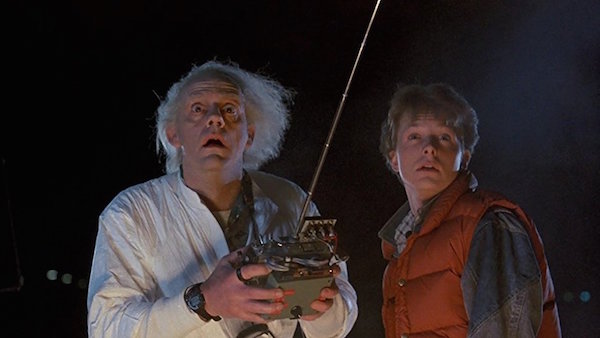
Privacy Overview

IMAGES
VIDEO
COMMENTS
Jim picks up a hitch-hiker, Ares, who says he's a scientist from the year 3059. He says he traveled millions of years into the future, but came back to the wrong year. Life in 3059 is trouble free, with machines taking care of everything. Future Earth is in trouble, with all life extinct, except for humans and plants.
Events are predetermined to still occur regardless of when and where you travel in time. Suppose you time travel to the past to talk Alexander the Great out of invading Persia, but he hadn't even considered this until you mentioned it. By traveling to the past to prevent Alexander's conquest, you caused it.
The story is long and involved, but the short version is this: In a thread begun in the fall of 2000 about time travel paradoxes on the online forum the Time Travel Institute — now known as ...
The Door into Summer, Robert A. Heinlein (1957) science fiction, fantasy. This short fiction book is one of Heinlein's lighter novels and uses time travel in a limited way. It begins in 1970. Dan Davis is the successful inventor of a household robot, an automated "cleaning lady" called Hired Girl.
The best time travel stories, for me, allow the writer to essentially explore what it means to be human, and the incredible books I have picked below do exactly that. *. Life After Life by Kate Atkinson. In this beautiful novel, Kate Atkinson uses a form of time-travel to investigate the fragility of being alive in a warm, luminous and witty way.
Cast Shane Carruth , David Sullivan , Casey Gooden , Anand Upadhyaya. Primer, by Shane Carruth. Carruth's infamous 2004 film, made on a shoestring budget, offers a version of time travel that is excruciatingly slow and ridiculously complicated. Essentially, the time travel engineers Aaron and Abe discover in their garage allows a person or ...
Works created prior to the 18th century are listed in Time travel § History of the time travel concept . A guardian angel travels back to the year 1728, with letters from 1997 and 1998. An unnamed man falls asleep and finds himself in a Paris of the future. Play - A good fairy sends people forward to the year 7603 AD. [1]
The 7 1/2 Deaths of Evelyn Hardcastle by Stuart Turton. An Agatha Christie style murder mystery with a body-hopping, time-looping sleuth, this novel is a work of genre-crossing genius. Set in a stately home in the 1920s, the story sees the titular character shot at midnight during her own birthday party.
via merchant. 1. The Time Machine by H.G. Wells. Arguably the classic time travel book, published all the way back in 1895, The Time Machine is one of the oldest time travel stories and is largely ...
The concept of time travel has long been a popular theme in fiction and film. Traveling back in time to alter the course of history is an alluring idea that has enthralled not just fiction writers but scientists as well. Yet, if you've ever seen or read a time travel story, you're aware that time travel is a tricky concept to grasp. It might be challenging to stay faithful to your ...
After reading multiple time travel stories, I noticed that it often took 50 to 100 pages to engage the reader in character and conflict and set up the time travel. Following this example allowed me to keep Elizabeth's growth front and center rather than letting time travel take over the whole story. 5. Keeping the focus on the character arc.
I resent that I won't ever get back the hours of my life that Richard Linklater stole with "Boyhood" — his two-and-three-quarter-hour film, shot over a 12-year period in which time is the ...
4. Avoid "As you know, Bob" conversations with characters from the historical time period. Put yourself in their shoes, with their current knowledge of the time period of which they are a part. You don't go around saying things like, "Barack Obama, President of the United States from 2009 to 2016.".
In a world where time flows differently in different regions, a society formed where time travelers exist and time itself can be a commodity. (Originally appeared in my post The Most Mesmerizing Fantasy World Ideas (2023)) Chronicler of Lost History. A person wakes up every day in a different time period, with no control over when or where they ...
Here are 10 quick ideas for a time travel story, including everything from colonies in the distant past and future, to time traveling Jews, Jesus, and jealous husbands. If one of these ideas inspires you to create a time travel story of your own, let us know and we'll share it with out community! 1. Future War.
10 Time Travel Story Ideas with a Mystery. The Missing Artifact: In the year 3023, a renowned historian discovers an ancient relic rumored to possess time-traveling capabilities. Desperate to uncover its secrets, they embark on a journey through different eras, tracing the artifact's origins. However, each leap through time reveals cryptic ...
The evolution of time travel concept in literature dates back to H.G Wells' 'The Time Machine,' published in 1895, which introduced readers to the idea of travelling through time. Since then, writers have been captivated by the possibilities that time travel presents for their stories. The influence of real-world physics on time travel stories ...
If you enjoyed these 43 Terrific Time Travel Writing Prompts …. please share them on Facebook, Twitter, and/or Pinterest. I appreciate it! These 3 lists of terrific time travel prompts will help writers of all ages write about traveling through time in their stories or just for fun. Take a look!
4 Time Travel Stories That Will Make You Question Reality | Unveiled. In 1901, two British teachers, Charlotte Anne Moberly and Eleanor Jourdain, were visiting the Palace of Versailles, when they allegedly had a most unusual experience. While exploring the Petit Trianon, a small chateau on the grounds, the duo reportedly began seeing people in ...
A time travel romance is a specific niche in the romance genre that, in addition to romance, blends elements of science fiction, fantasy, and/or historical fiction, depending on the method of time travel and the time period characters get to visit respectively. ... even if the protagonist tries to do so. For example, perhaps a woman visits an ...
One of the first known examples of time travel appears in the Mahabharata, an ancient Sanskrit epic poem compiled around 400 B.C., Lisa Yaszek, a professor of science fiction studies at the ...
1. When Air-Marshal Sir Victor Goddard accidentally entered a parallel universe. 1.bp.blogspot.com. In his book on the subject, Time Travel: A New Perspective, J. H. Brennan talks about an 'accidental' time travel story that'll definitely stay with you for some time to come. According to the writer, Air-Marshal Sir Victor Goddard flew into a ...
Example: In Orpheus With Clay Feet by Philip K. Dick, the main character, Jesse Slade, enlists in the services of a time travel tourism agency, who set him up with a trip that allows him to go back in time and act as a muse for some significant historical figure. Slade chooses to go back and inspire his favorite science fiction writer Jack ...